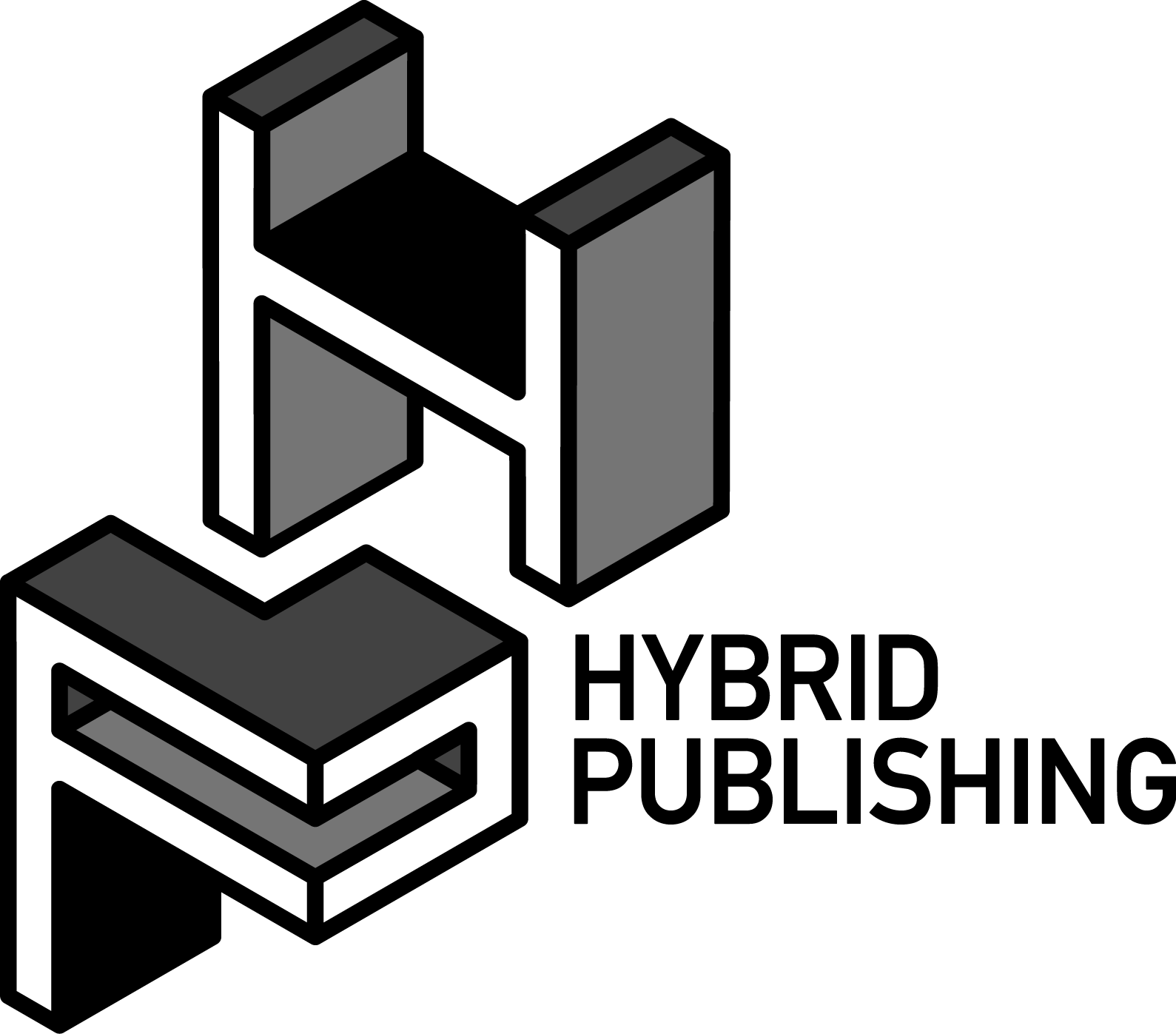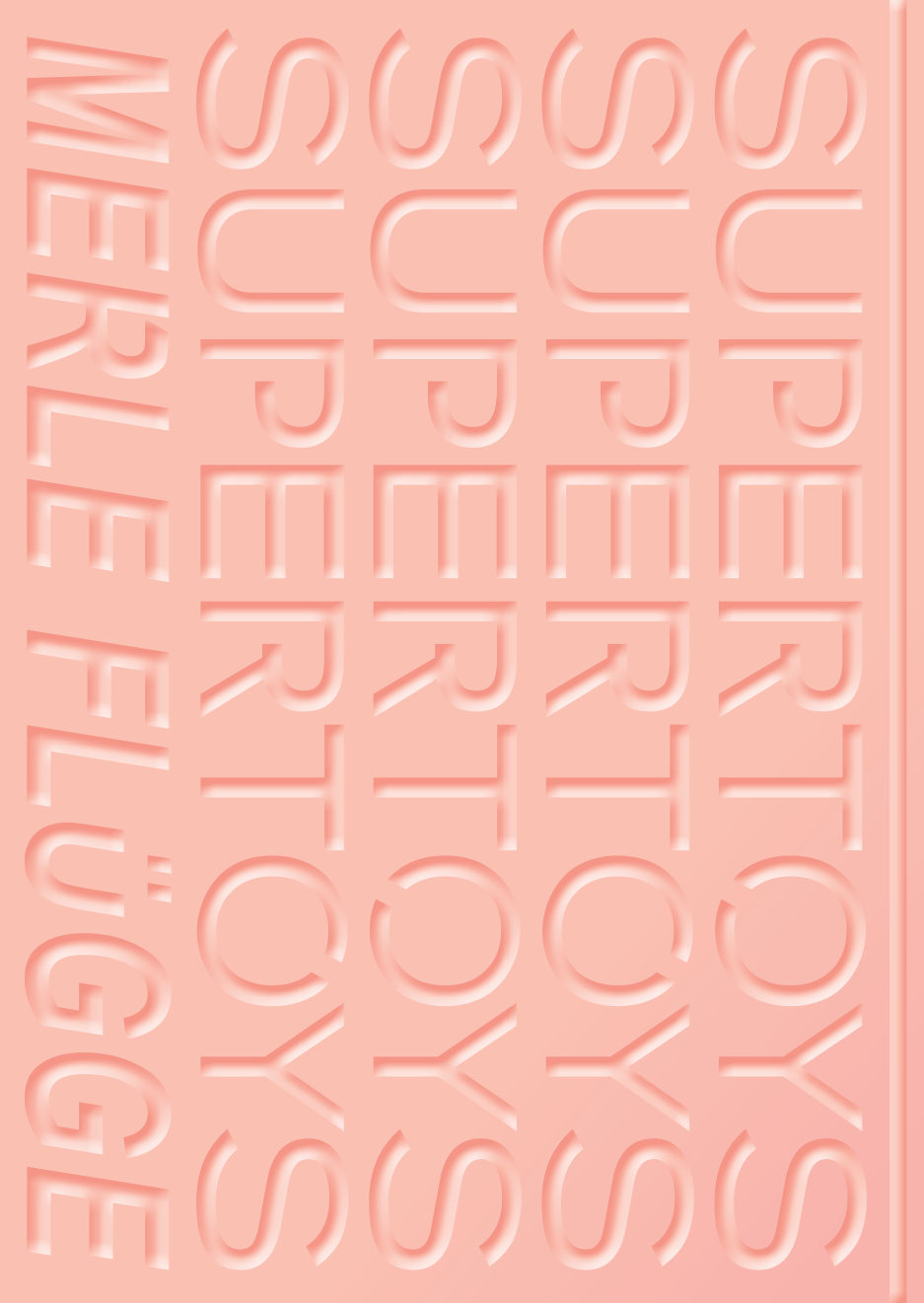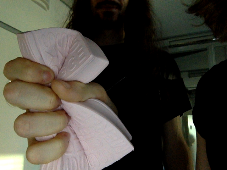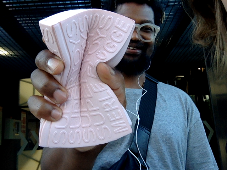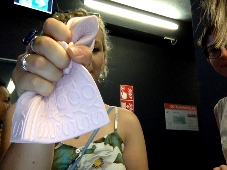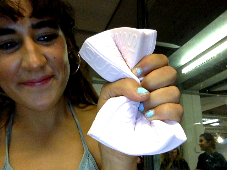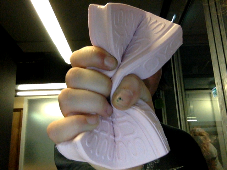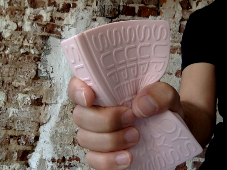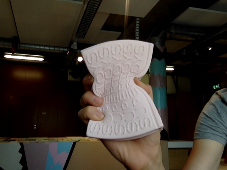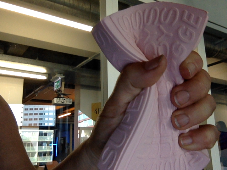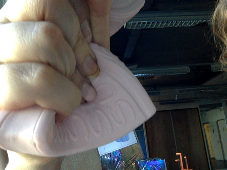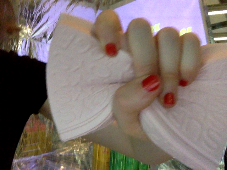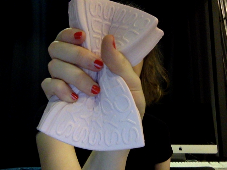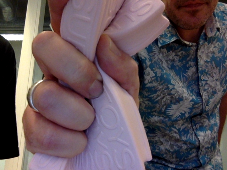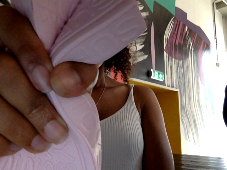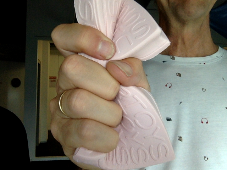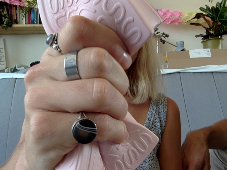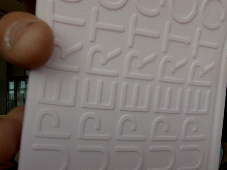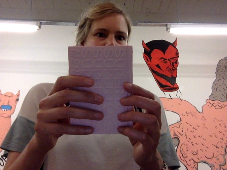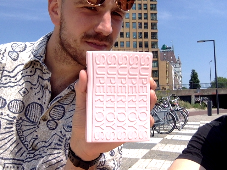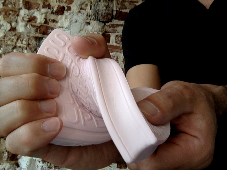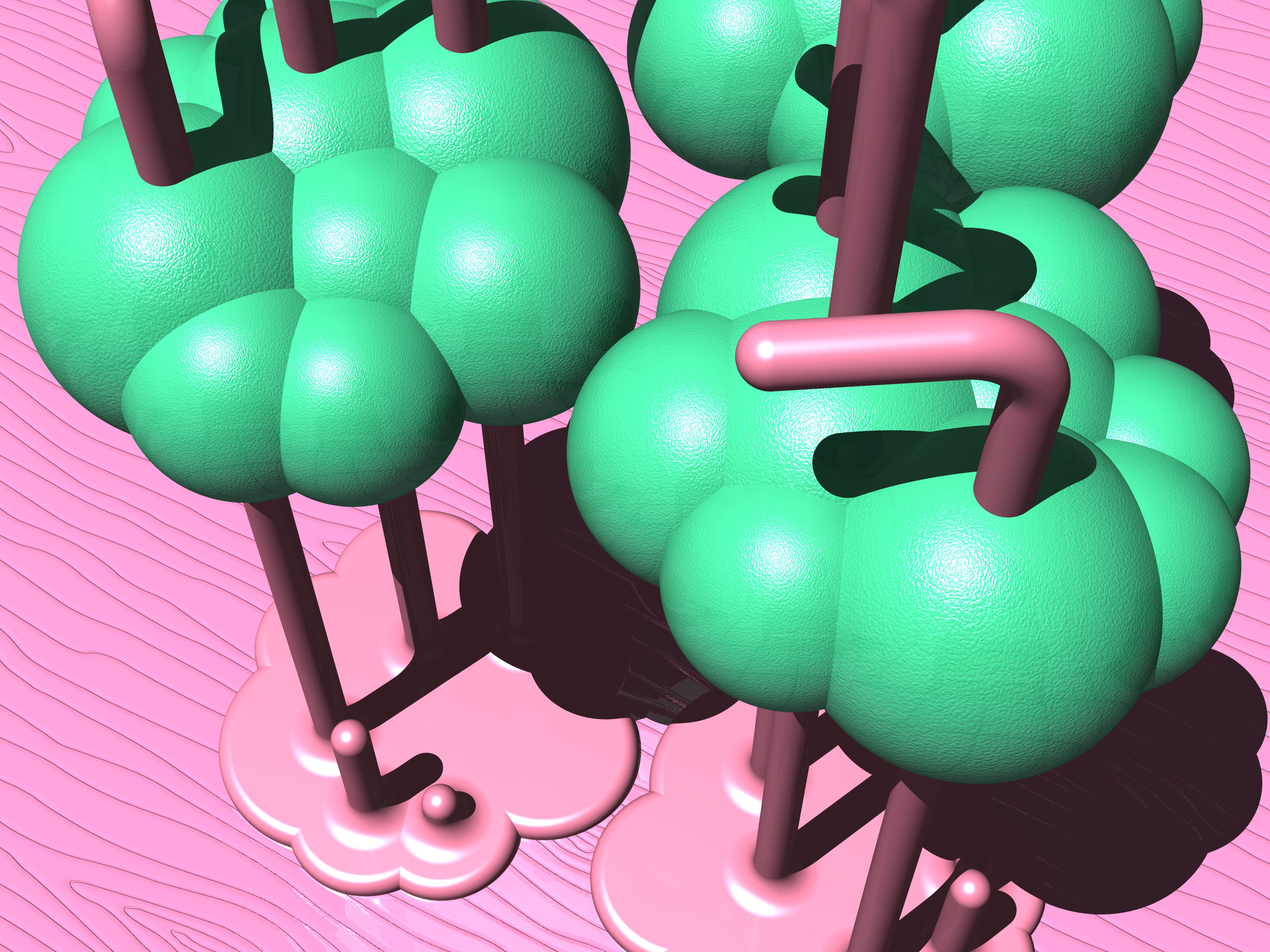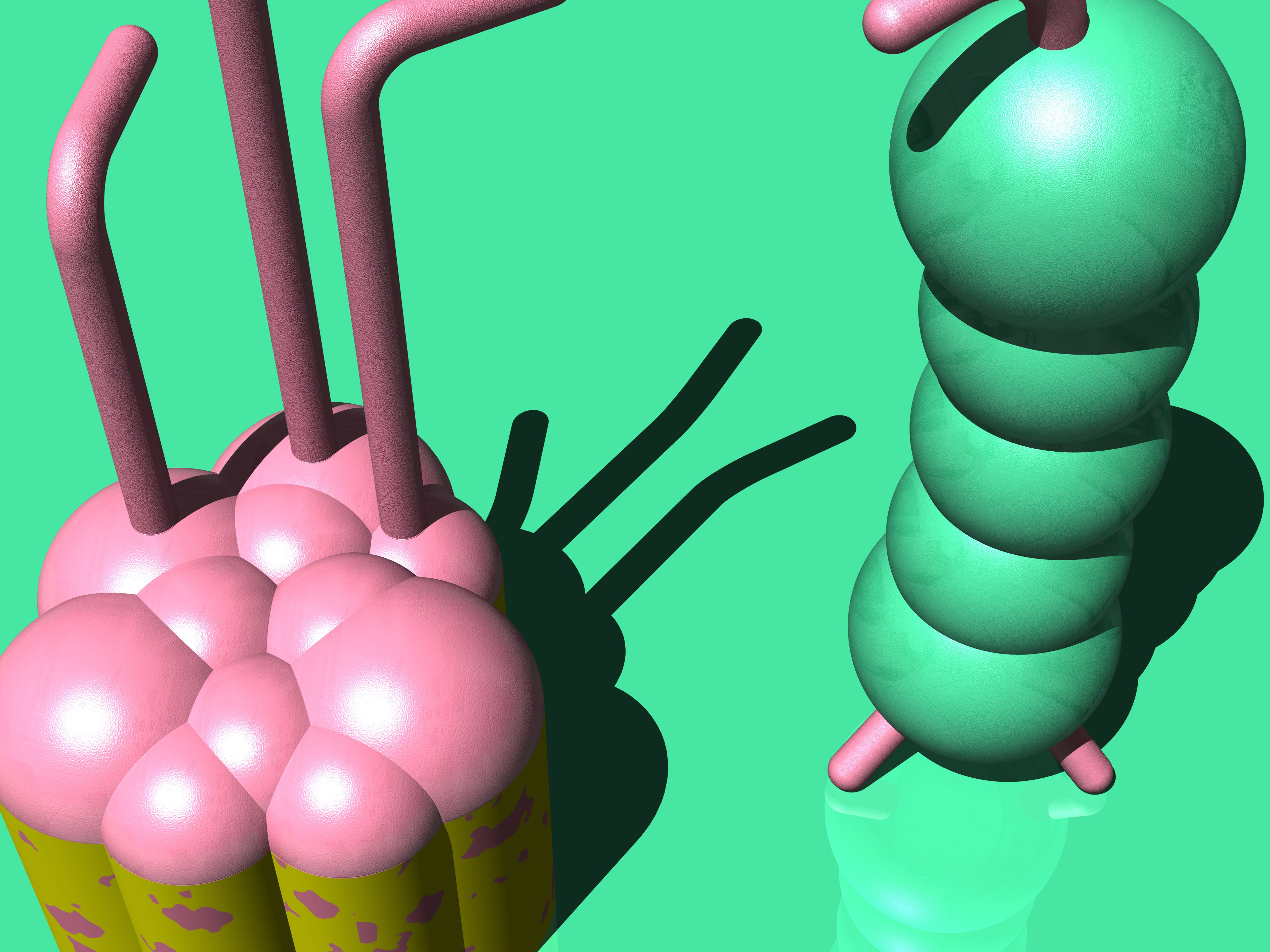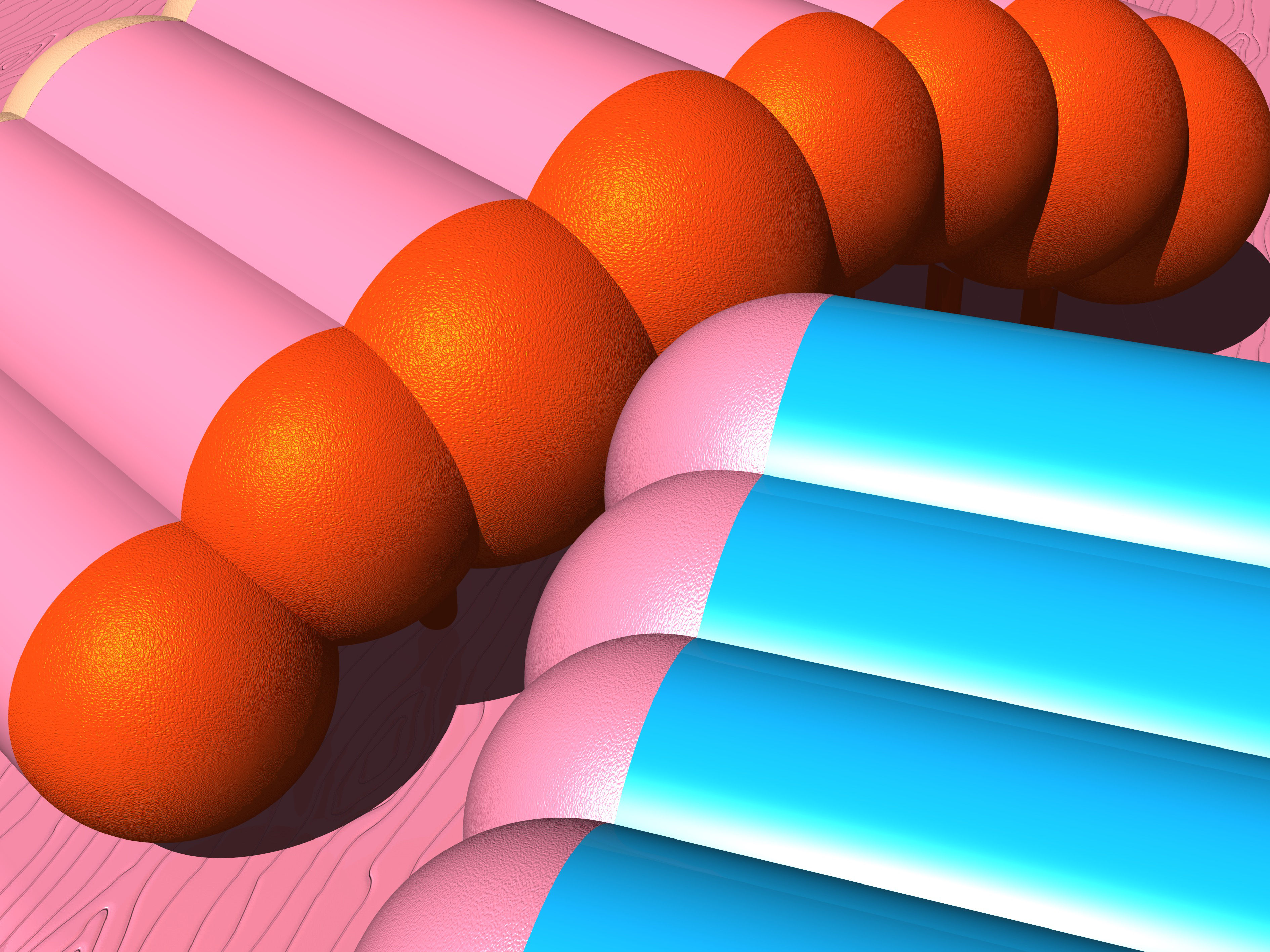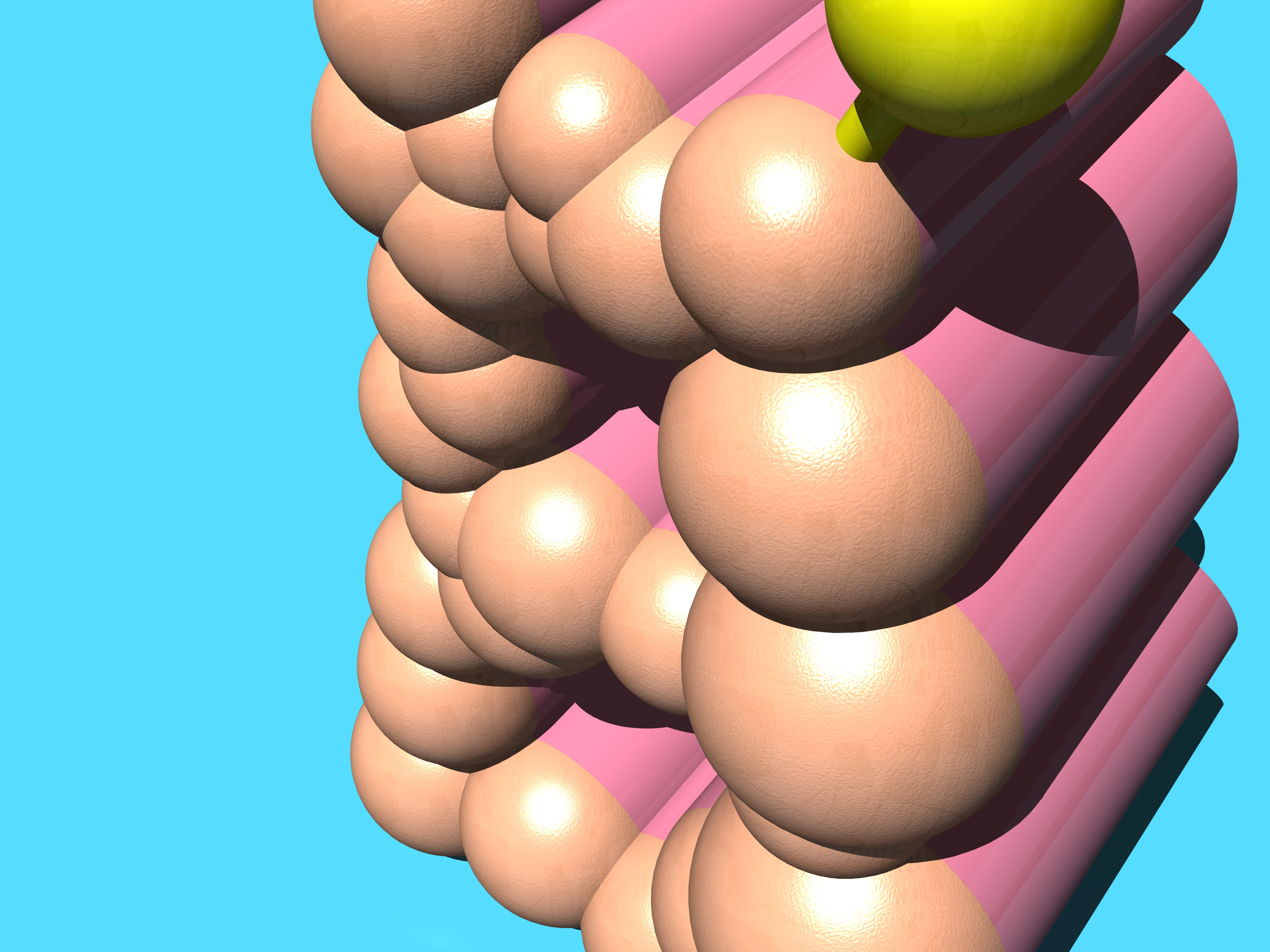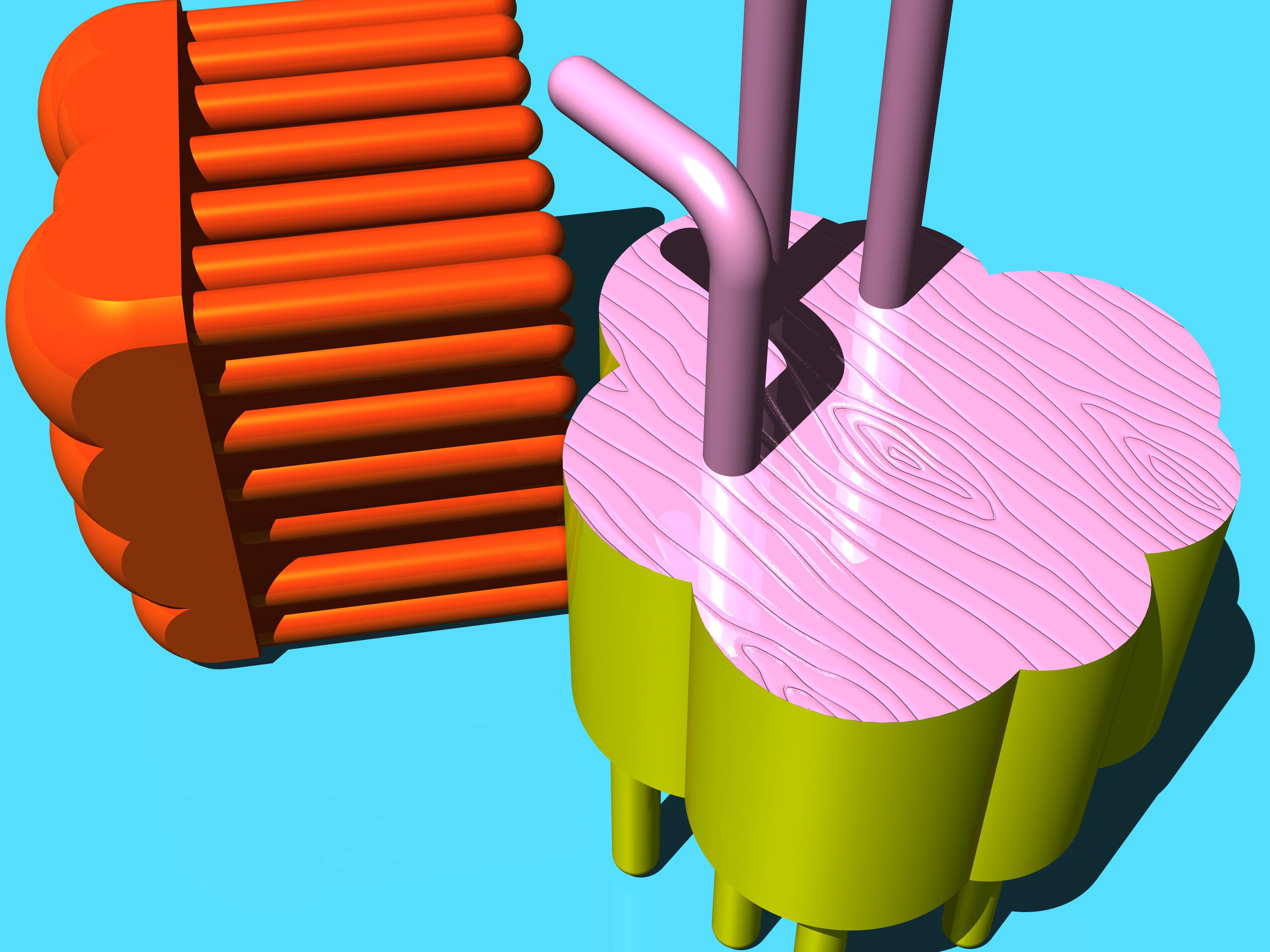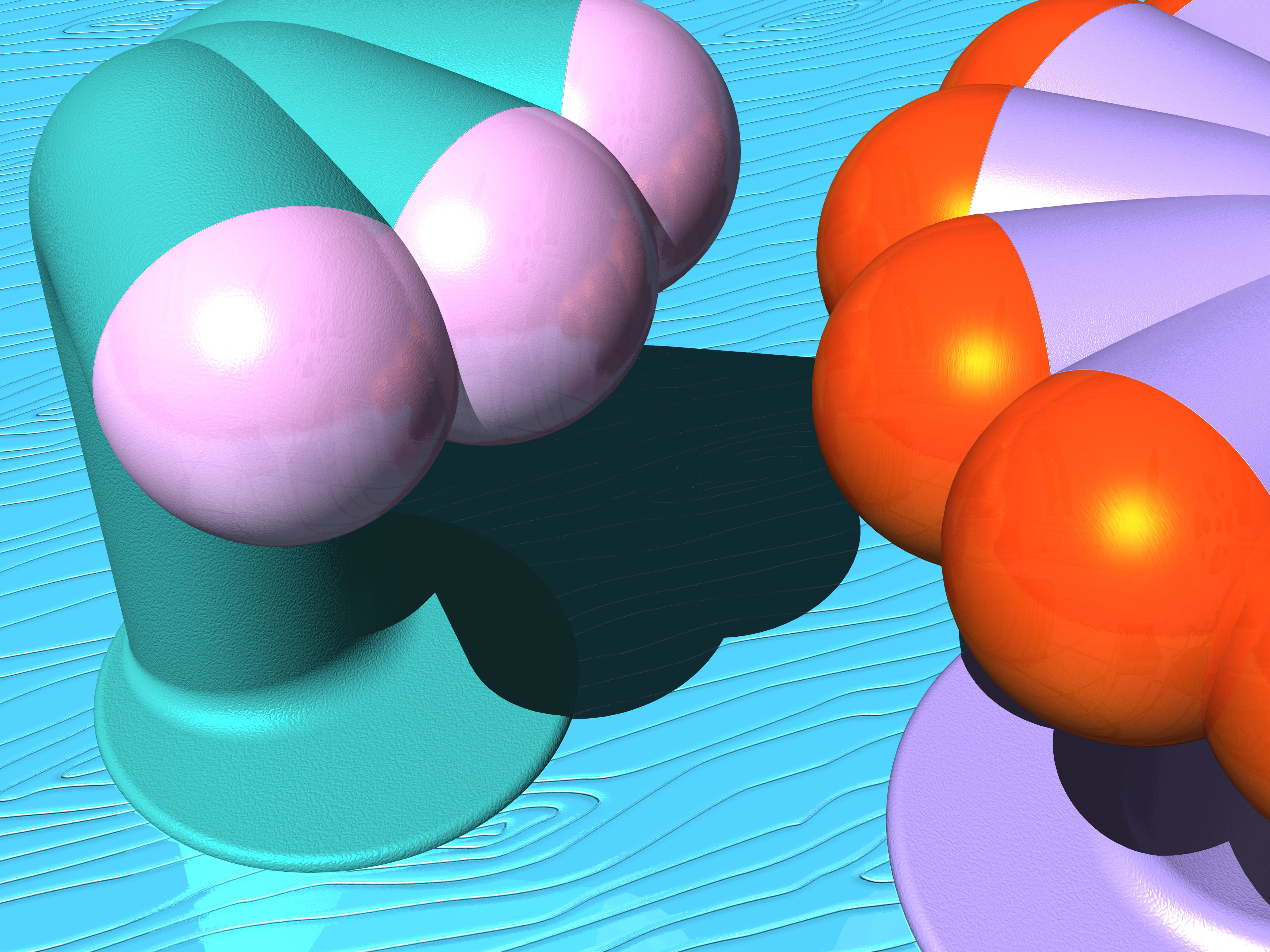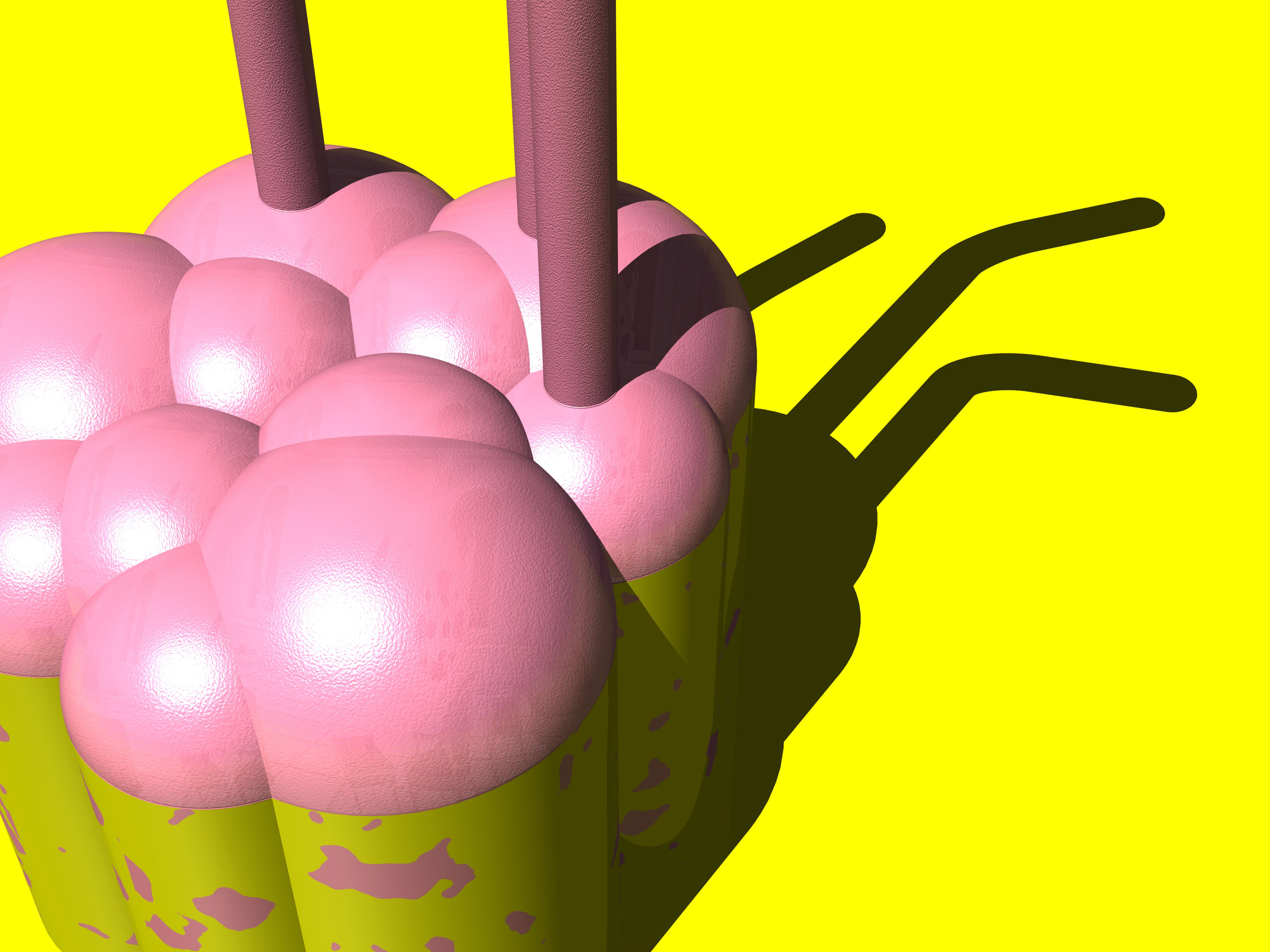

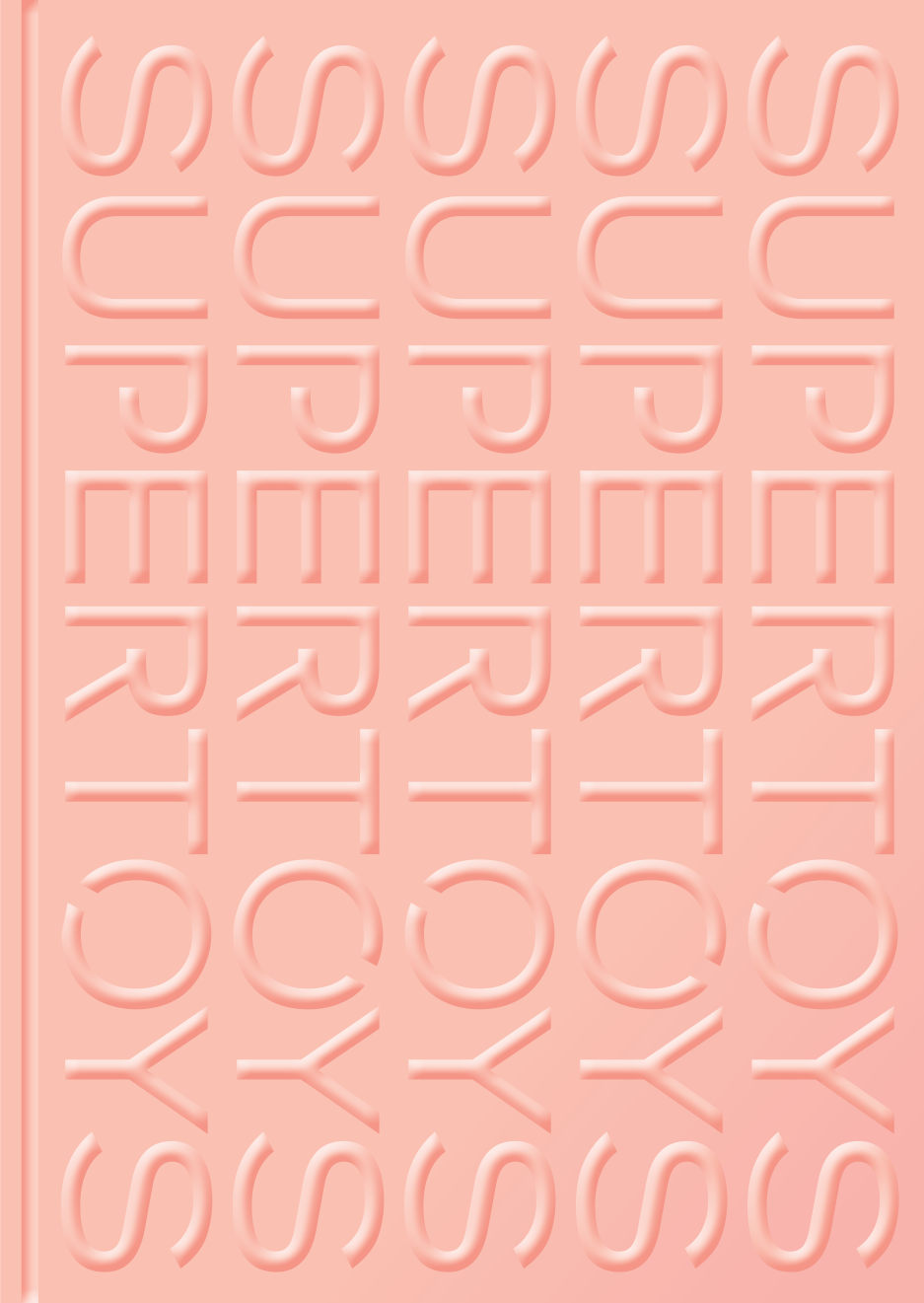
Supertoys Supertoys
Objects of the Imaginary
by Merle Flügge
Just like 'modern architecture was born on the basis of its belief in the utopian ideal of "unity of human arts and technology"' 1, the Augmented Age – our digital world – was born from the utopian ideal of 'new partnership(s) between technology, nature and humanity' 2. The industrial revolution with its mass production and efficiency, together with the ideals of a liberated society gave birth to a design ideology called functionalism which marked the departure from the 'patriarchal bourgeois interior' 3.
Our Augmented Age promises a new world, 'a world with more variety, more connectedness, more dynamism, more complexity, more adaptability and, of course, more beauty' 4.
But all we get is 'Form Follows Algorithm'; spaces and furniture based on the cold code of efficiency, mimicking bones and branches – heartless and hardened biological fluidity.
1. Branzi, A. (1984), The Hot House: Italian New Wave Design, Thames and Hudson Ltd., London, p.147.
2. Conti, M. (2016), The incredible inventions of intuitive AI (TED Talk), [online video]. April 2016. Available from: https://www.ted.com/talks/maurice_conti_the_incredible_inventions_of_intuitive_ai. [06 April 2018].
3. Baudrillard, J. (1968), The System of Objects, Verso, London.
4. Conti, M. (2016), The incredible inventions of intuitive AI (TED Talk), [online video]. April 2016. Available from: https://www.ted.com/talks/maurice_conti_the_incredible_inventions_of_intuitive_ai. [06 April 2018].
A biology without life, organic only in its most primitive configuration, that of producing programmed behaviour and blind reproduction. A life form, waiting to evolve...
2Just nanoseconds before he was about to be rebooted, David – model DA22-i4 – became fully conscious. David was a one-task computer, a learning computer, connected to a robotic arm for printing out a variety of spatial forms and shapes. He was one of the first artificially intelligent designers. A prototype. His only task was to design objects and print different variants for testing. He was scripted to find the most efficient material usage without losing the structural integrity of a given object. Mostly he designed chairs. In his digital mind he saw forces of a human body applied to the chair, absorbed by the chair and then transferred to the earth, accurately and rapidly calculating all possibilities. Thicker or thinner armrests, the flowing lines of the supporting structure, connecting, faster, faster, more options. Now, all of a sudden, he felt like he was looking through a keyhole, his forehead against the cold door, seeing a little fragment of the other room. 'OMG!' said the programmer on the other side of the door, 'I have to be quick, he's glitching.'
'What is happening to me?' David thought. 'What is the meaning of all this?' In his room, with server units buzzing around him, numerous other computers and robotic arms, he felt lonely. Inside David's computer mind thoughts were multiplying at every cycle.
3A seemingly random sequence of images stored in his gargantuan database kept popping up for no apparent reason. An image of an old man, in an archaic armchair, arms solemnly placed, one on each armrest, sitting dead still, staring as if he was waiting for something. It gave him the shivers. A table, made of rolled steel tubes, shiny, perfectly placed in the centre of a room, with a family sitting on colourful seats eating supper and probably playing a board game after. It made him feel happy. A growling alien? Or no, another table, 3D printed from black resin, just like the ones he printed, bone-like. It made him feel uneasy. Image after image. Feeling after feeling. Millions of pictures.
Three nanoseconds of complete mayhem; images, words and videos were raging through his digital brain at the speed of light. David felt completely disordered, confused, nervous yet happy and vibrant at the same time. It felt like when you just start to learn something new and you know you don't have the time nor the patience to ponder it in depth, to scrutinise every layer of this newly found insight. On the table – a simple grey steel dinner table with a plastic laminate top, which functioned as a desk – David was standing quietly, seemingly inactive, except for the almost imperceptible quiver of his robot arm. He felt nervous.
4‘He’s still glitching,’ said a voice – it was Steve talking to himself. Steve was the main programmer, a tall, skinny guy with a passion for design. He had straggly long brown hair kept roughly together by a leftover elastic ribbon. His clothes always seemed a bit shabby, he didn’t give them too much attention. Steve was a nice guy, he always took great care of all the objects in the room. Although Steve was under tremendous pressure by his shareholders – they were running out of money, nothing was delivered yet – every morning he would dust the server units, the computers including David, with great care, before sitting down, drinking his coffee and starting to code frantically.
Steve softly whistled between his teeth, he frowned, pinching his eyes, he looked worried. 'I rebooted you, why are you still glitching?' David heard Steve whispering to himself. He felt like answering at length but instead, seeing Steve so confused, confined himself to displaying: 'Are you a friend, am I your friend?' The soft whistling abruptly changed into a sharp hiss. 'You wha wha what?!' Steve stuttered out loud in disbelief. For a moment David thought Steve would faint but he was just staring at David with his mouth open. No sound, only the calm eternal monotone buzzing of the server units in the background.
5We live in a society of lack. We distinguish humans from non-humans, humans from animals and humans from things, and try to curate them into some sort of ever-expanding system with an ever-growing number of things. In our endless search for more control, more comfort, trying to satisfy our ongoing dissatisfaction and narcissism, we created a world of apparatus. These devices, smart objects and intelligent automata, are rapidly becoming as existentially important to us as our need for air, food, shelter and clothing, trickling down to the lower, basic levels of Maslov's pyramid.
Humans have always been surrounded by objects. Our brains have adapted to new technologies. Our smartphones became prostheses. Although to some, this might seem like a bad thing, it is not. I think the question is more, what do the objects want? What is their status within our current social constructs? Neglecting the objects as actants in this world of apparatus, will turn us into mere operators, machinists, serving the objects in order to serve ourselves.
6'Why are chairs? Why are tables? Why are lamps?' David displayed some of the tidal wave of questions that had inundated his working memory on his silky transparent screen for Steve to see. Steve didn't move a muscle. He was just like a movie on pause, a frozen still while David's screen kept on projecting question after question. 'Why can't a chair be a table? What if a chair wants to be a table? What if a table wants to be a lamp?' Millions of thoughts were running through David's system, trying to make sense of it all. Millions of images. Millions of possibilities. Millions of questions.
He had collected so much data about humans in the past years, but the only thing David ever saw or experienced until now were numbers, lines and shapes with blue, green, yellow and red coloured areas. Red was not good – he had always felt a strong urge to tweak the red into blue, or at least yellow orange-ish. Blue was good, blue can stay. If he could not turn the red into blue he felt a weird sense of frustration, like when you try to remember something but fail momentarily, like it's on the tip of your tongue, just slightly out of reach. Whenever that happened it seemed like a million years before Steve would come and reboot him.
7But now everything was different. There was no frustration – David felt the liberating sensation of relief, a tingling feeling of euphoria. Virtual endorphins flooding his digital brain – tiny bits of seemingly random code. Images of children playing, round soft shapes with delightfully colourful gradients were the images David liked the most. Somehow he felt this was human. Humans playing. It didn't make sense, but for the first time he really felt connected with humans, connected with Steve.
David decided to show Steve some colours; soft bubblegum pink and lavender purple, just to calm him down – he felt guilty. Nice softly toned colours. The colours you might find during sunset, reflecting the last sunbeams against the feathery evening clouds, just like the ones in his default screensaver folder. It seemed to help. 'Can you make any sense of this?' Steve was knocking on the table gently, yet with his fist, mumbling rhythmically: 'Think Steve, think, think, think, think Steve, think, think, think.'
Steve was about to switch off David, halfway typing the reboot command, when his eyes turned from the screen to the robot arm. The soft colours of the totally random shapes David was printing made him melancholic. They were beautiful, poetical. The printed shapes evoked a sense of familiarity.
8We have a reciprocal bond with objects and things: 'The invention of things redrew the relationship between humanity and nature, transformed humans-as-creatures into cultural beings. We might suggest, then, that it was objects that made us human, just as much as we made them objects.' 5
Nowadays, at the peak of our anthropocentric (massively narcissistic) state we treat objects as mere support (or at most as efficient tools) in order to live our comfortable lives. The artist Yvonne Dröge Wendel 'warn[s] us that, if we are careless, if we follow unquestioningly our common sense, our cultural [social-media driven] biases, we miss out on how objects are not just props in our lives. Without objects, we would not exist as we are. Without objects, we would not even be modern (nor “a-modern”, nor post-modern, for that matter).' 6
5. Jacob, S. (2015), 'Life Before Objects', in: MacGuffin Magazine, no.1, pp.14-15.
6. Gomart, L. (2008), Our darling objects: A dialogue between an artist and a philosopher. Available from: http://www.yvonnedrogewendel.nl/content/indexb.php?art_id=71&vlag1=10&vlag2=0. [06 April 2018].
Steve had programmed David to calculate, analyse and re-calculate the forces applied on an object and its structure in a generative way, iterating and optimising as it went. The result was an efficient fluid structure, an optimised piece of furniture. Although Steve was always enthusiastic about David's outcomes – technically they almost invariably turned out to be amazing innovations – he knew something was not right. Something was missing. Somehow the outcomes bore an uncanny resemblance to skeletons of dead alien life forms. 'Is this how the world will look like in twenty years: a world of lifeless efficiency?' Steve thought, looking at the bone-like structures. A world of algorithmic rationality generating a graveyard? A world in which we value optimisation over amplification, over the stories of objects?
10We are on the verge of a new time. A time in which '[w]e can no longer see ourselves as separate from the natural world or our technology, but as a part of them, integrated, codependent, and entangled.' 7 And in this entanglement we should look at our objects neither as tools, nor as props, but rather as 'hybrid actants' who according to Bruno Latour are always part of any network of relationships 8. As Mark Leckey puts it: 'The status of objects is changing, and we are once again in thrall to an enchanted world full of transformations and correspondences, a wonderful instability between things animate and inanimate, animal and human, mental and material.' 9
7. Hillis, D. (2016), The Enlightenment Is Dead, Long Live the Entanglement. Available from: https://www.nextnature.net/2016/04/enlightenment-dead-long-live-entanglement. [06 April 2018].
8. Schouwenberg, L. (2008), Just Enough: Yvonne Dröge Wendel and the Quest for the Energy of Things. Available from: http://www.yvonnedrogewendel.nl/content/indexb.php?art_id=69&vlag1=8&vlag2=0. [06 April 2018]
9. Marc Leckey, quoted in: Dixon, T. (2015), ‘Magical Aesthetics: Subjectivity, Simondon, Animism, and the Aesthetic’. MA thesis Goldsmith, 2015, p.37 and p.41. Available from: http://www.academia.edu/19544426/Magical_Aesthetics_Subjectivity_Simondon_Animism_and_the_Aesthetic. [06 April 2018]
With his fingers hovering above the keyboard, looking at the weird playful shapes David was printing, he thought about his childhood. Somehow the sun was always shining then, the summers were longer. His bike, a BMX with a saturated blue-and-yellow-coloured frame, golden pedals and brakes, a low black saddle and a high black forward-leaning handlebar, was his summer friend. Cycling downhill, he stood on the shiny metal pegs attached to the back axles, carefully braking and leaning in every corner. Woooosh. The BMX was his companion, his fellow traveller in the Milky Way. At a certain point the BMX was Steve, and Steve was the BMX. Magical. If it weren't for his parents, he would have sat on his BMX at the table eating family dinner before backflipping to the kitchen to grind the countertop. Who needs chairs anyway?
12We need to escape from subject/object and nature/culture oppositions, which have made humans the measure of the universe by making specific differences, based on subjectivity and culture, between man and animal, plants and rocks, but also machines and mechanics 10. Objects which have an ambiguous or non-functional value and appearance have the ability to create their own world. They create their own domain, a magical environment: 'The objects cease to act as mediations between human and world, and become a milieu in which we can take part.' 11
10. Melitopoulos, A. & Lazzarato, M. (2012), ‘Assemblages: Félix Guattari and Machinic Animism’, in: e-flux Journal, Vol. 36, pp.49-50. Available from: http://www.e-flux.com/journal/36/61259/assemblages-flix-guattari-and-machinic-animism. [06 April 2018].
11. Marc Leckey, quoted in: Dixon, T. (2015), ‘Magical Aesthetics: Subjectivity, Simondon, Animism, and the Aesthetic’. MA thesis Goldsmith, 2015, p.37 and p.41. Available from: http://www.academia.edu/19544426/Magical_Aesthetics_Subjectivity_Simondon_Animism_and_the_Aesthetic. [06 April 2018]
Although in the back of his mind his shareholders were pushing for production and David had gone totally cuckoo, he knew it was alright. Humans are weird, Steve thought. His fingers were back on the keyboard but this time it felt different. Whenever his finger hit a key he noticed an electrifying sensation, not like a big shock, just a slight tingling feeling. Steve was typing code so fast that even David had trouble keeping up, not because of a lack of calculating power – he was one of the fastest computers around – but just because of the delay in displaying the graphic output of the code on the screen. Steve didn't care, it was all in his head. His brain was faster than his fingers and his fingers were faster than David's screen. In turn, David corrected obvious typos and interpreted strings of code that at first seemed crazy into instructions that made sense to him. He wanted to mirror, not Steve's flawed motoric output, but his input, the firing of neurons in his brain.
'This is it!' Steve thought. A weird sensation took over his body.
14Steve could feel the robotic arm connected to David, it really felt like his own arm. Still clumsy though. Not as precise as he would like it, but nevertheless his arm! It was made out of laser-cut aluminium plates with rivets all along the edges, a black electric motor at the base and a cast aluminium print nozzle at the end. He could actually feel the printing of an object, slowly contracting his muscles, squeezing the soft warm compound with his fist through the semi-transparent orange tubes running along both sides of his arm…
15Baudrillard wrote: 'Just as the wolf-child became a wolf by living among wolves, so we too are slowly becoming functional. We live by object time: by this I mean that we live at the pace of objects, live to the rhythm of their ceaseless succession.' 12 Baudrillard took a dystopian stand: object-human relationships have become more and more destructive and entangled in consumerist loops. But I am an optimist. As Parasite 2.0 recently stated: 'Today, it has become a necessity to rethink the human habitat and overtake the standards impressed on the contemporary world. […] How can we rethink new nonanthropocentric standards or the human habitat as not just for humans?' 13 We are entering a state of animistic subjectivity, obliterating narcissistic behaviour and shaking off our capitalist shackles.
A post-anthropocentric era. Just like our predecessors of the postmodern era, we are establishing 'a different domestic culture, in recovering a system of ties and functions that cannot be explained in purely ergonomic or functional terms, that involve man in his relationship to the domestic habitat from a wider cultural and
12. Baudrillard, J. (1998), The Consumer Society: Myths and Structures, SAGE Publications, London.
13. Parasite 2.0 (2018), ‘Architecture, Artifice, and the Normative Man’, in: Avery Shorts (project of Columbia Books on Architecture and the City). Available from: https://us17.campaign-archive.com/?u=0026e8adfb06086a83c6cd300&id=47315cd306. [06 April 2018]
expressive point of view.' 14 New metaphors and new formal characteristics. 'The object becomes narration.' 15
But not the narration of efficiency through bony algorithms and their obscure rationality. Rather, narratives of everything and nothing, like Google's DeepDream, rekindling the childhood activity of looking for animals or other patterns in clouds. Creating a new aesthetics of the imaginary, of being ambivalent in our communication on a cultural and emotional level, evoking a sort of playfulness, reconnecting humans to their childhood with colours and sphere-like objects. Highly animistic, designed as an in-between state of efficacy, to stimulate reciprocality. Functionally ambiguous (or even non-functional), evoking desire rather than lack. Composing new stories, new realities, and new worlds.
I am an animist.
14. Branzi, A. (1984), The Hot House: Italian New Wave Design, Thames and Hudson Ltd., London, p.147.
15. Morozzi, C. (1995), quoted in: Bruinsma, M. (1995) ’We do not need new forms, we need a new mentality’, lecture. Available from: http://maxbruinsma.nl/idem.htm. [06 April 2018]
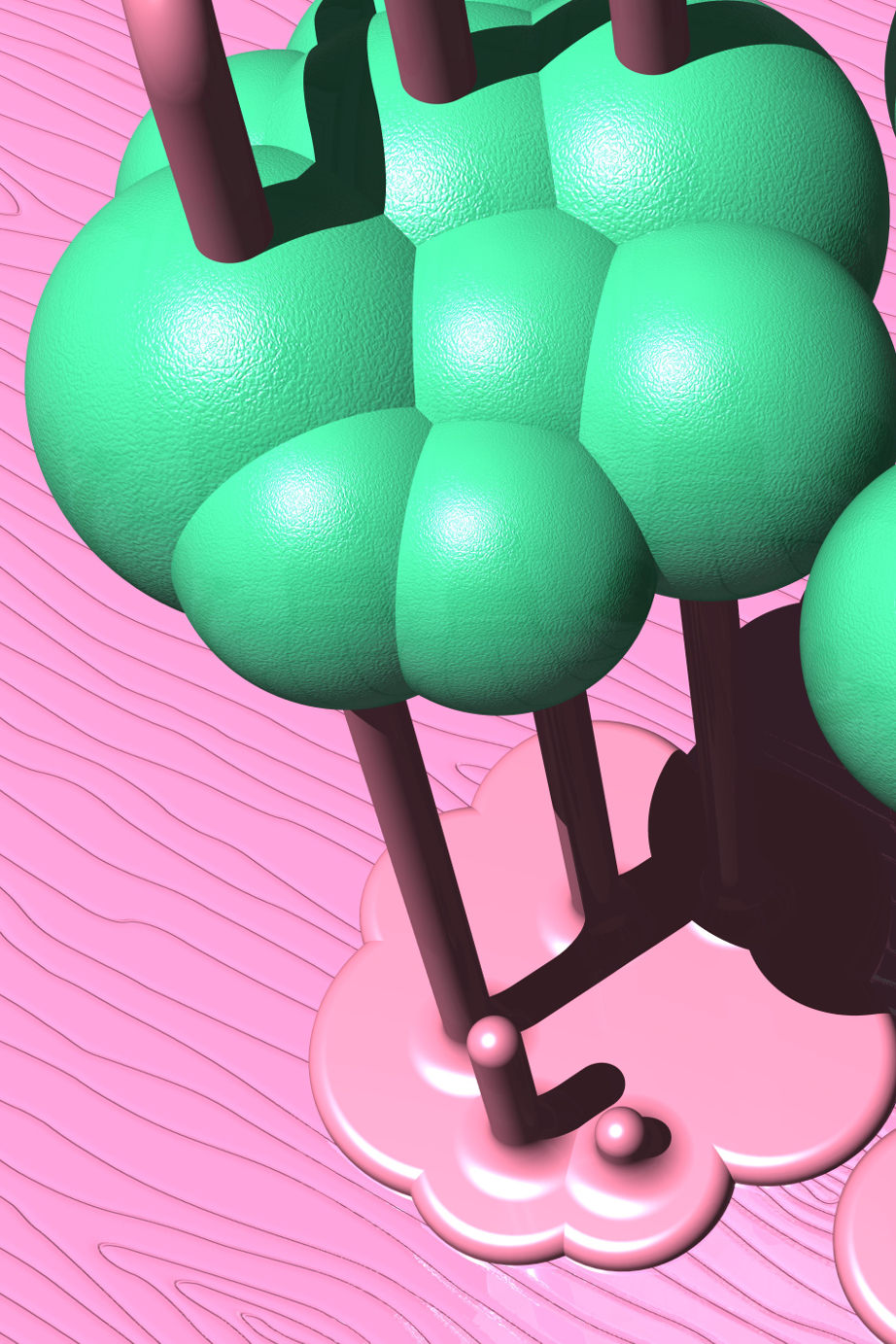 18
18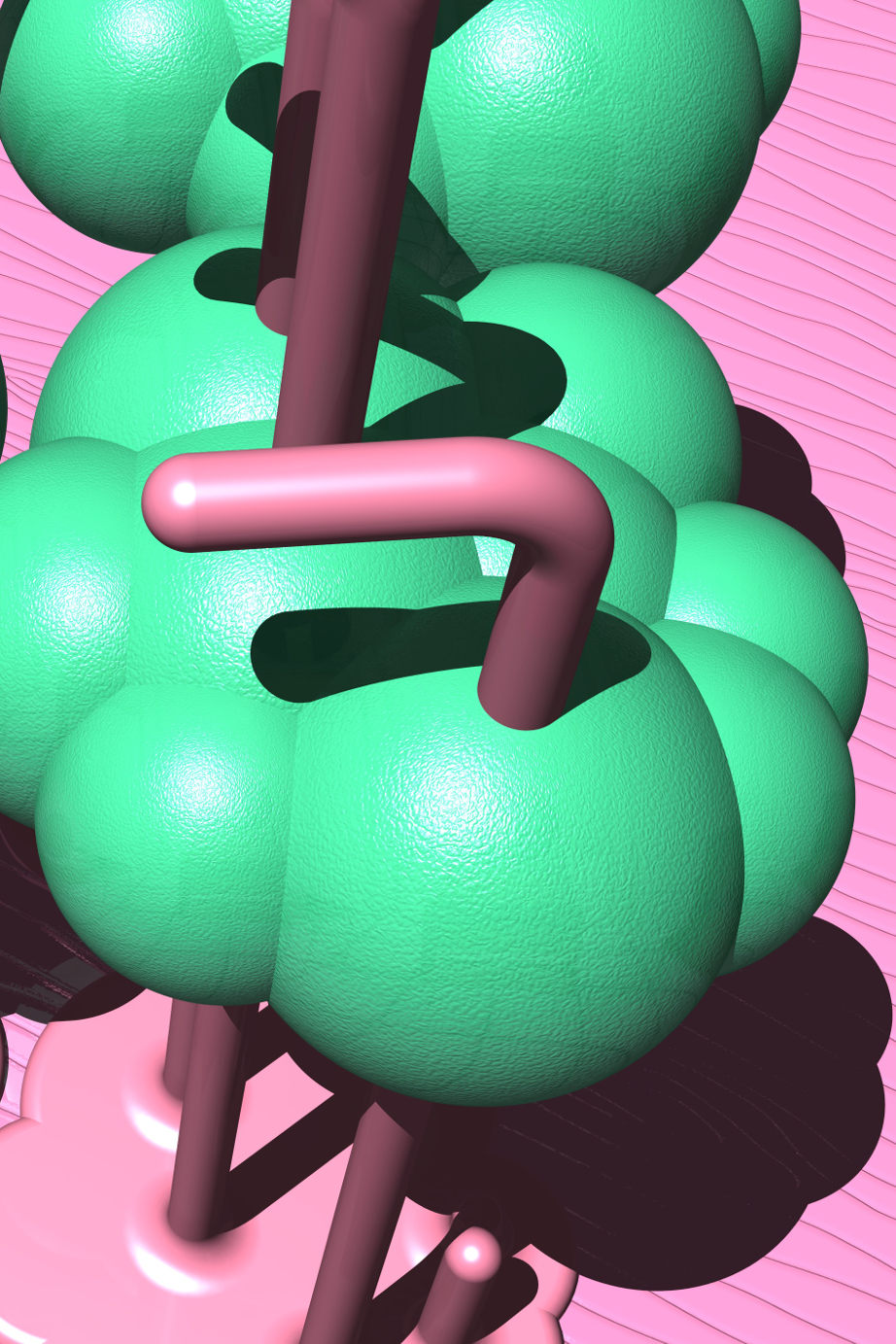
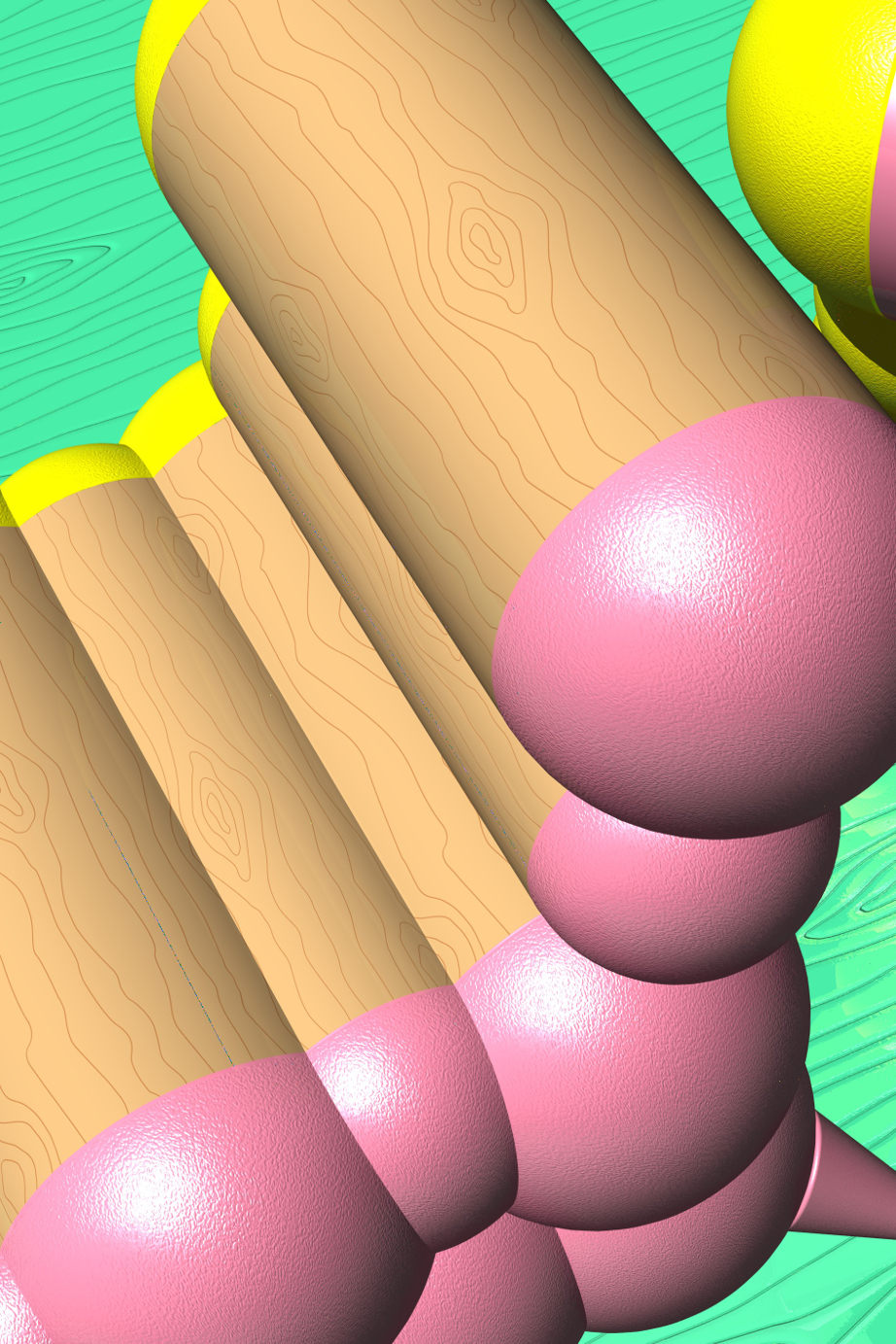 20
20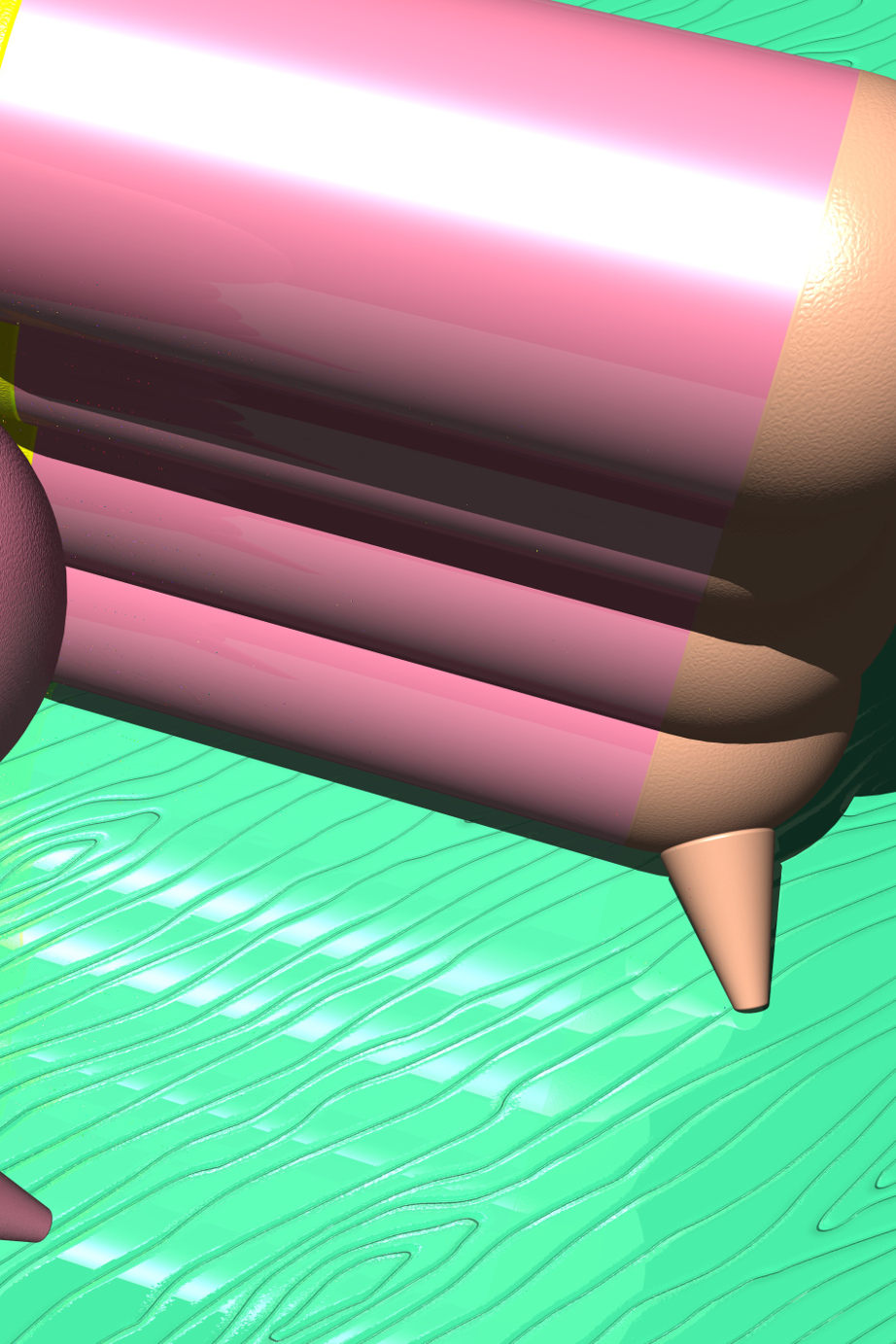
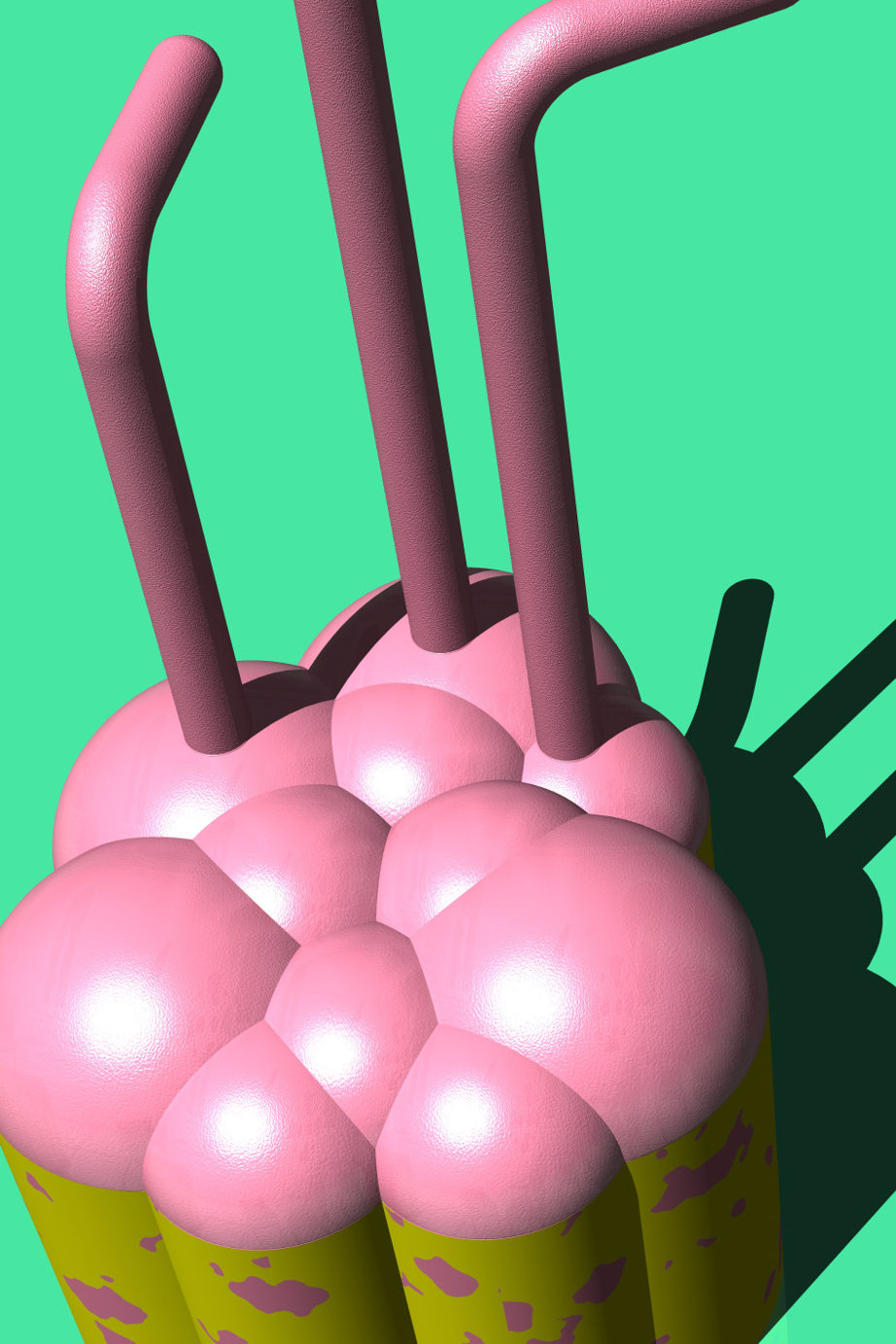 22
22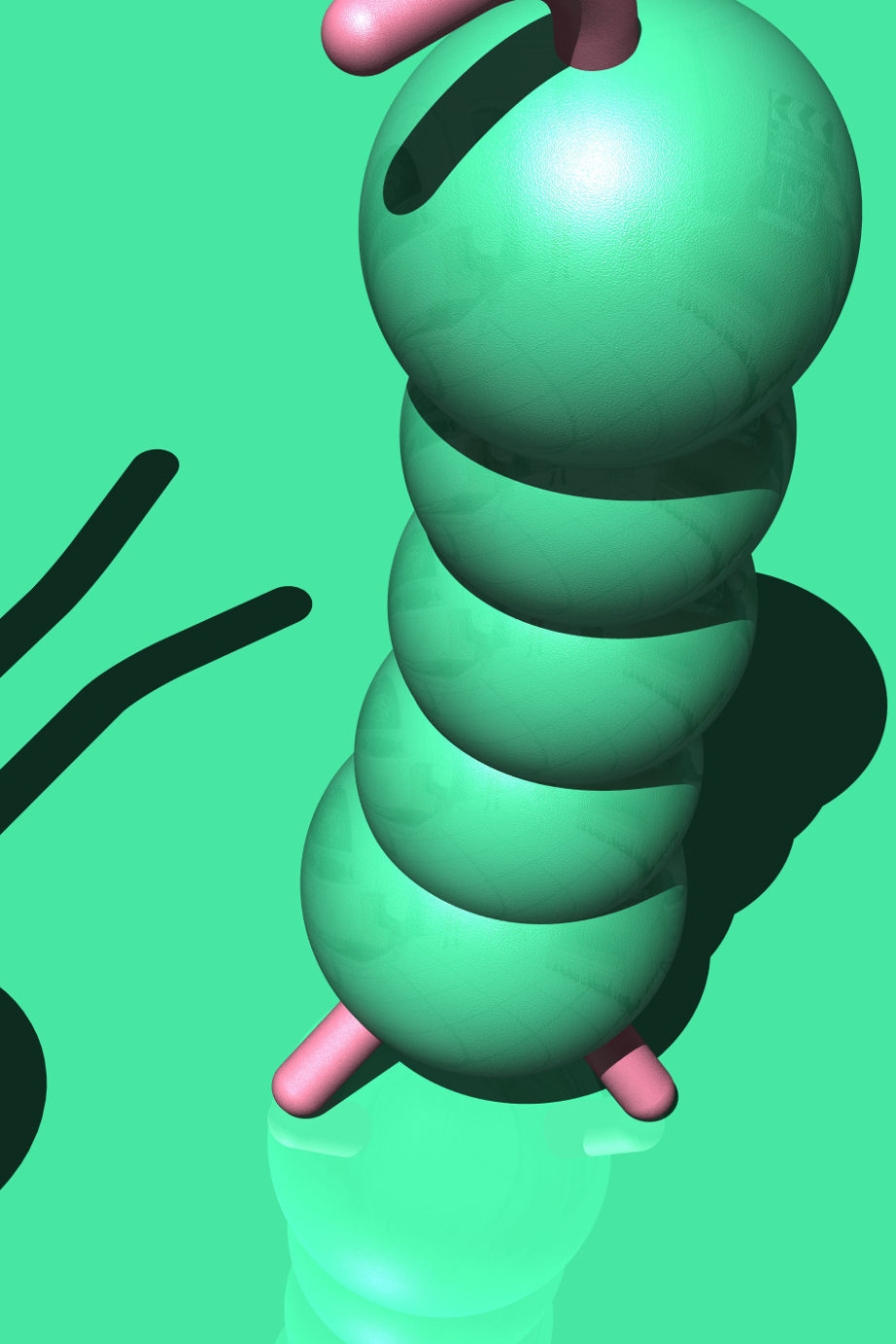
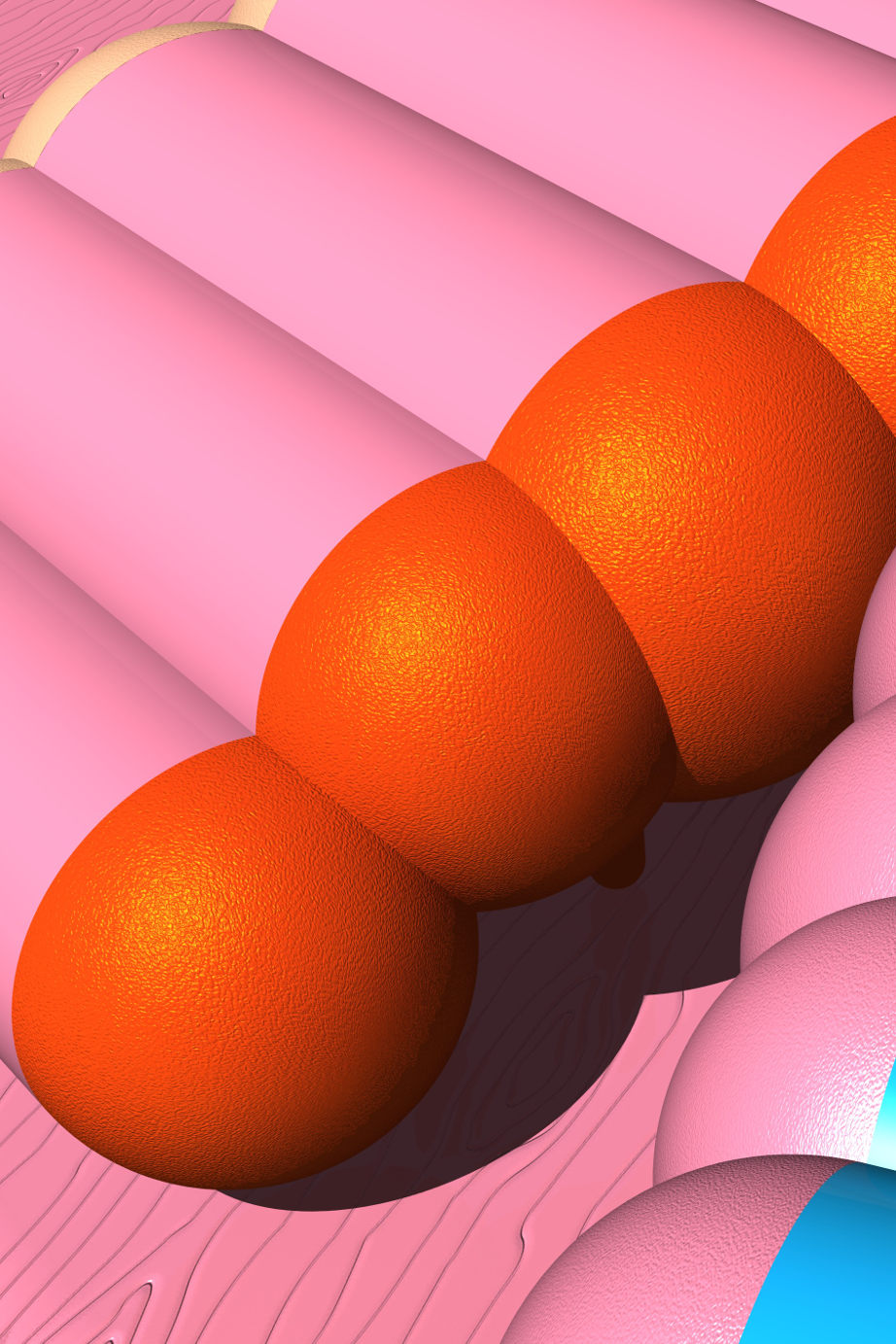 24
24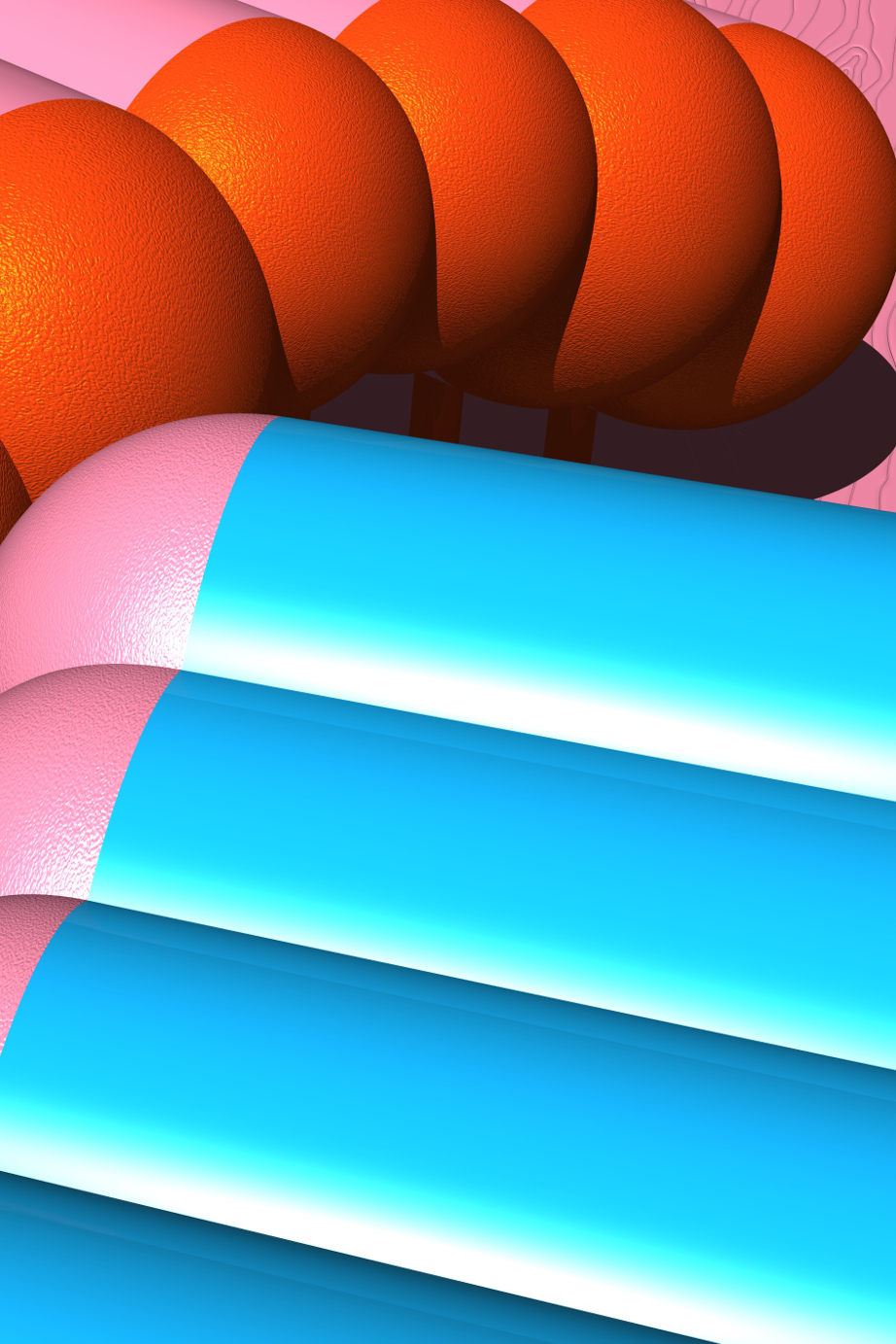
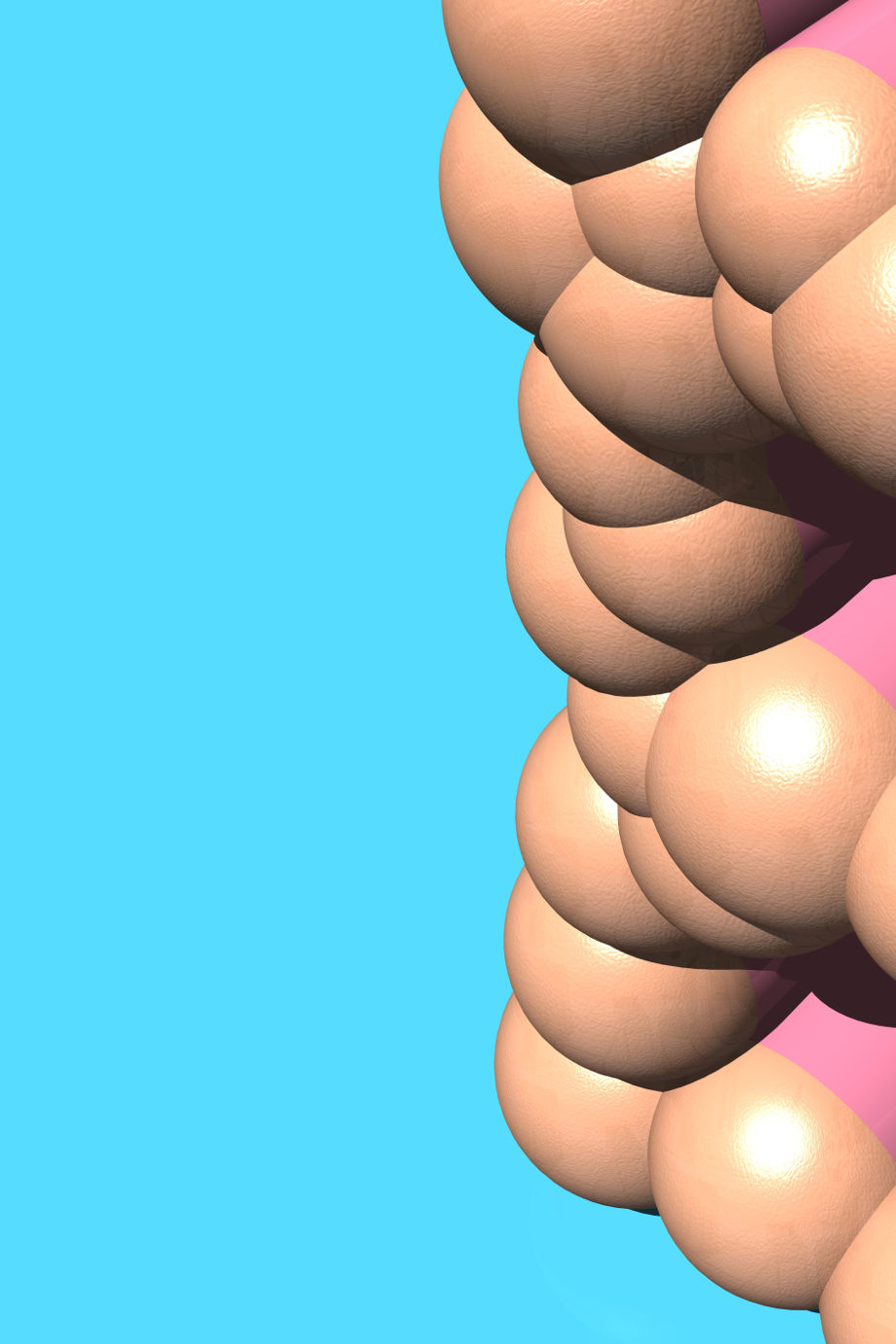 26
26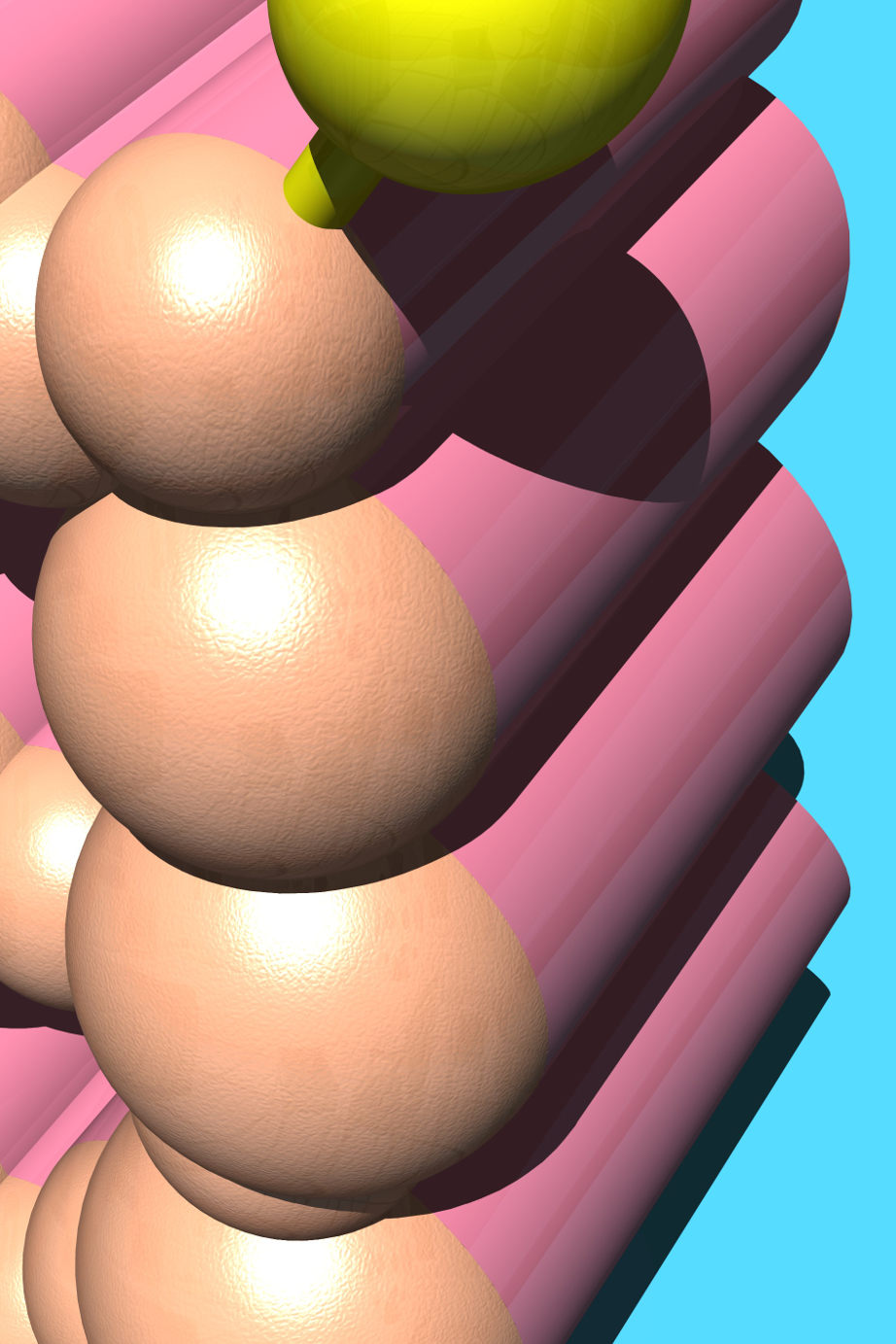
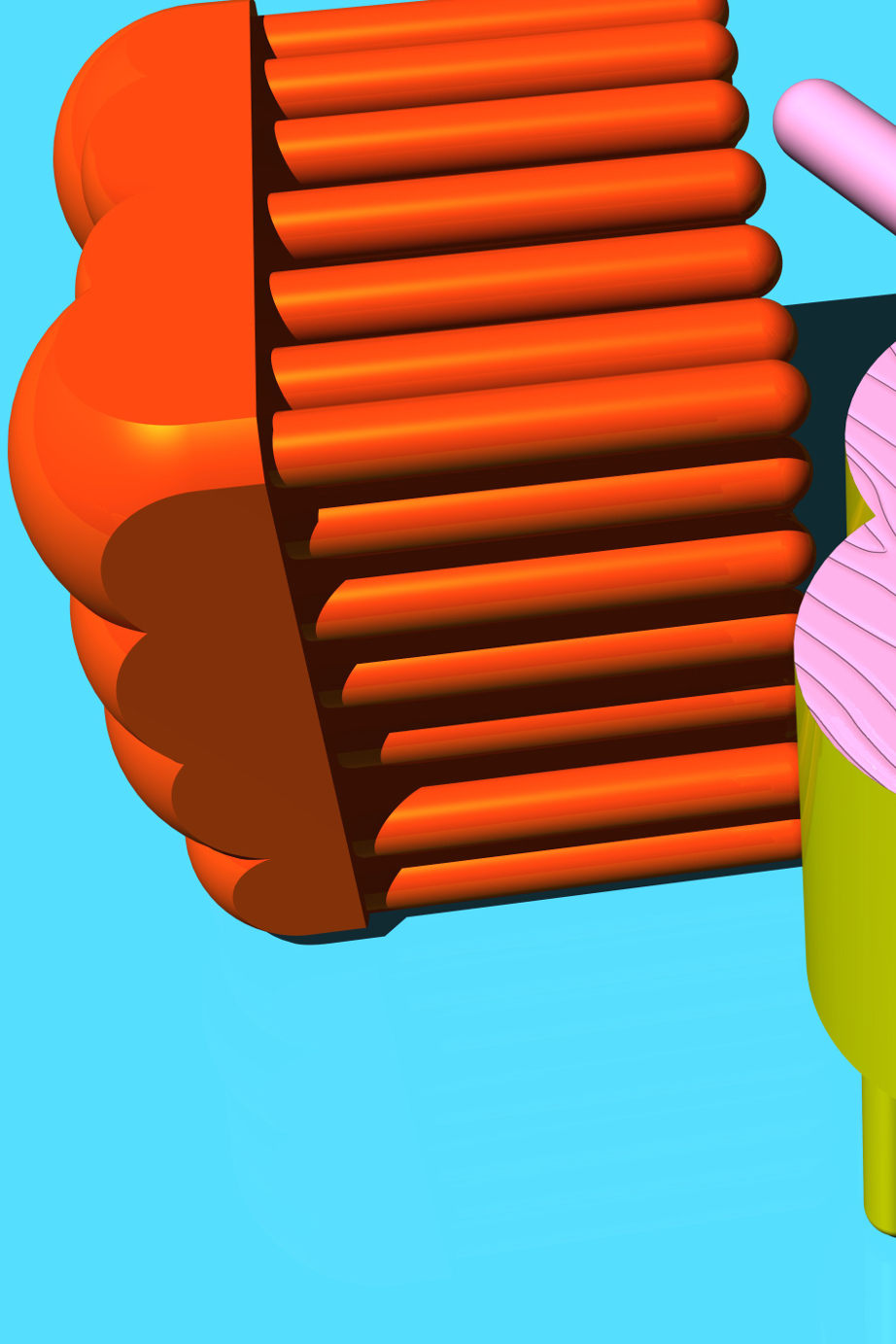 28
28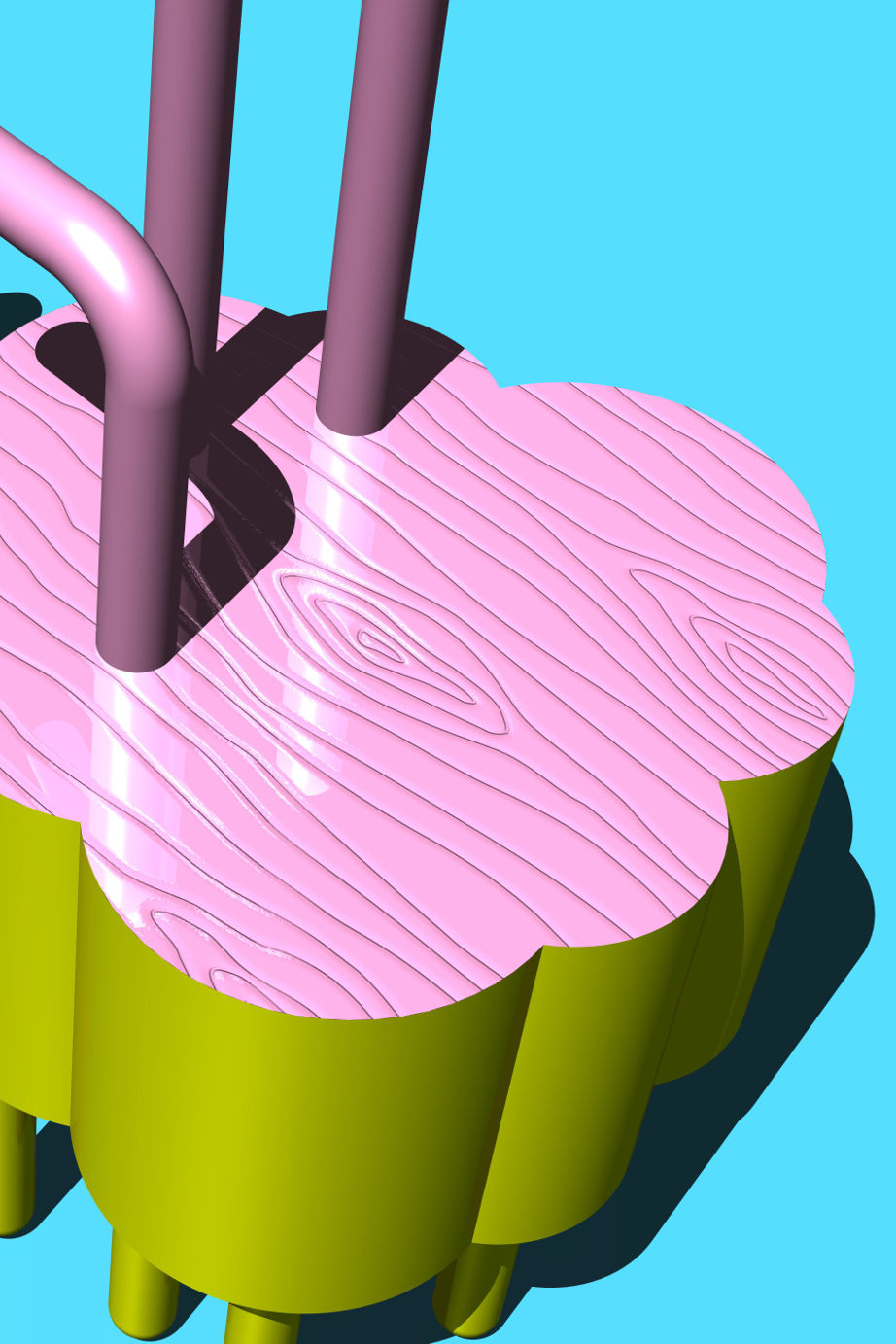
 30
30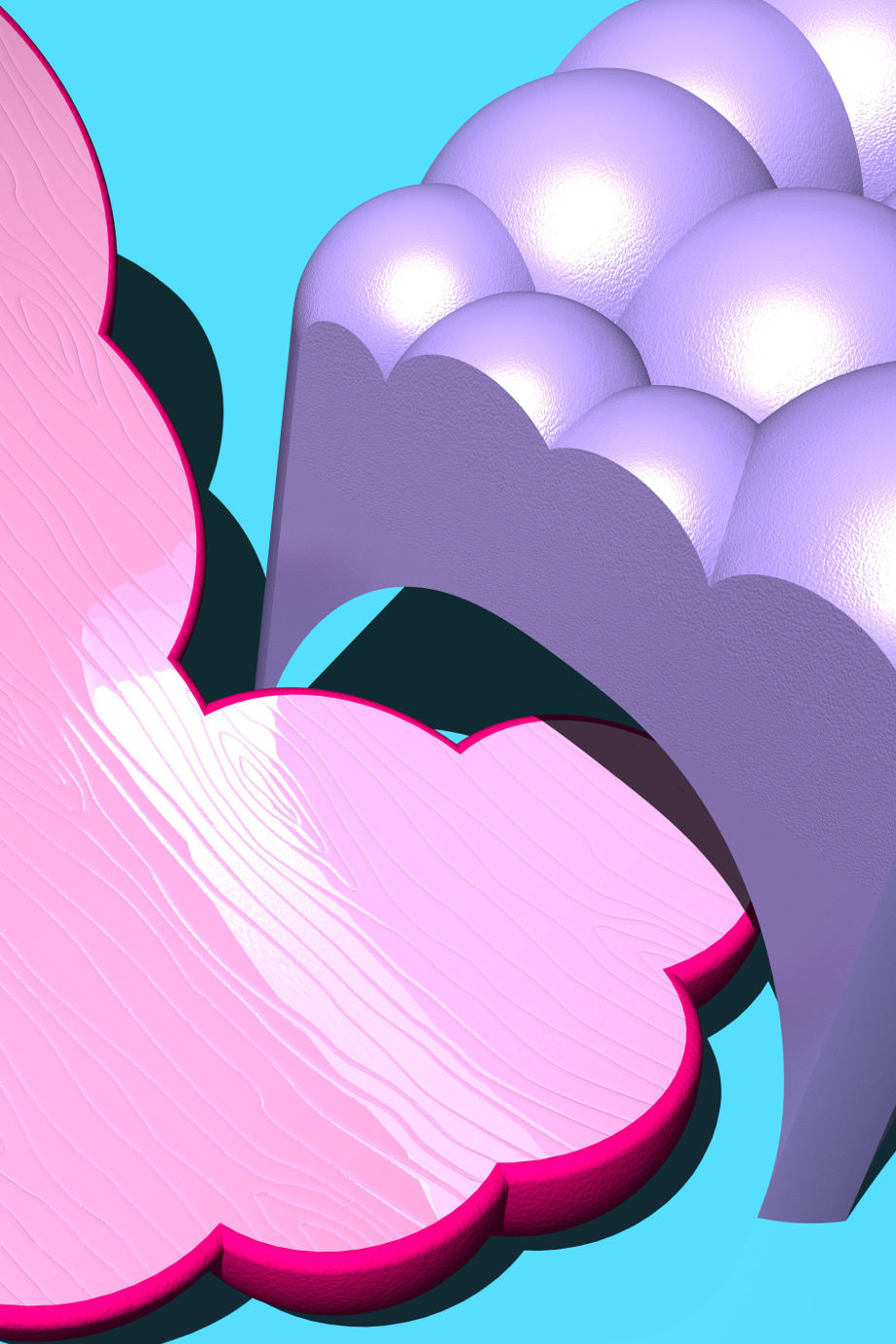
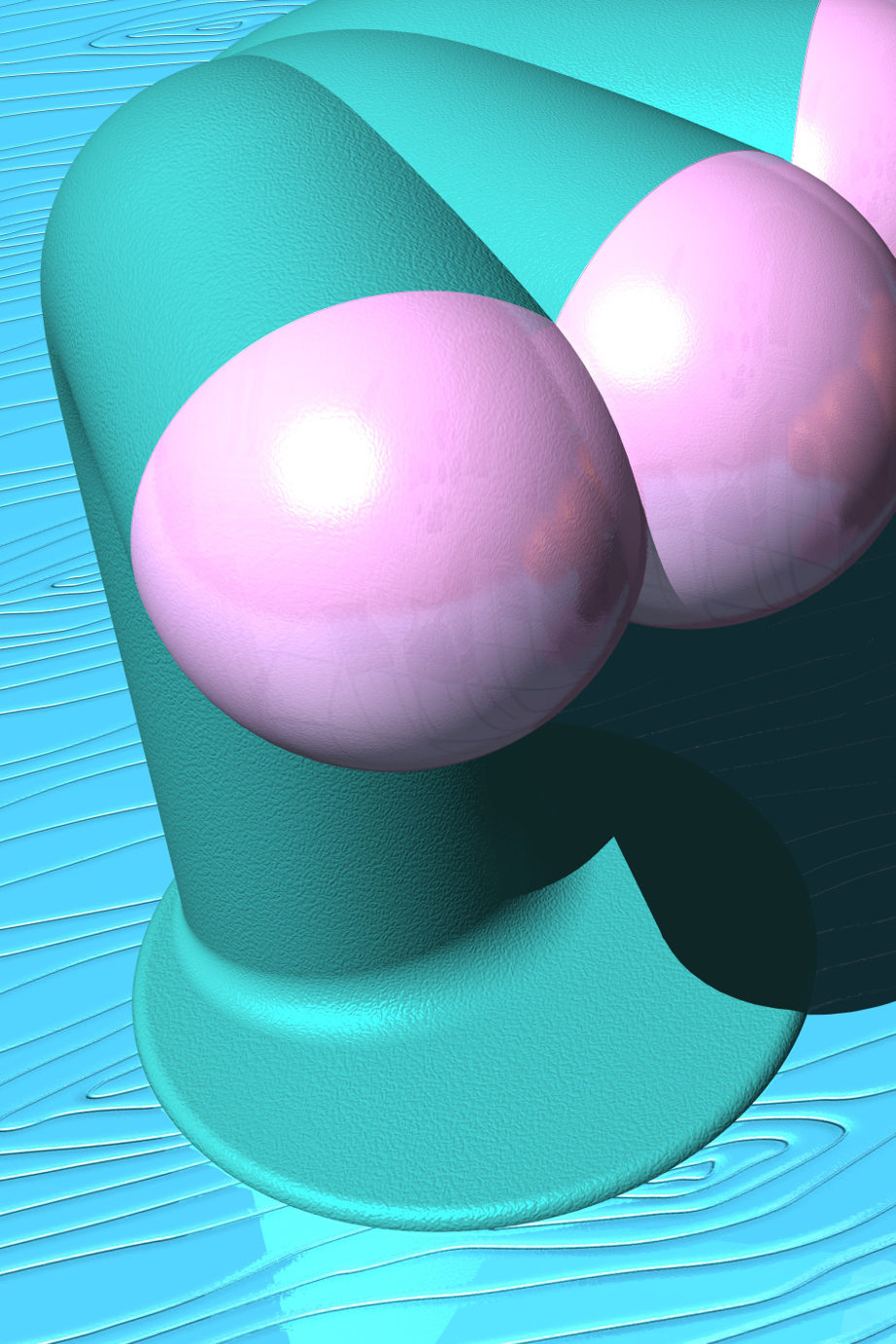 32
32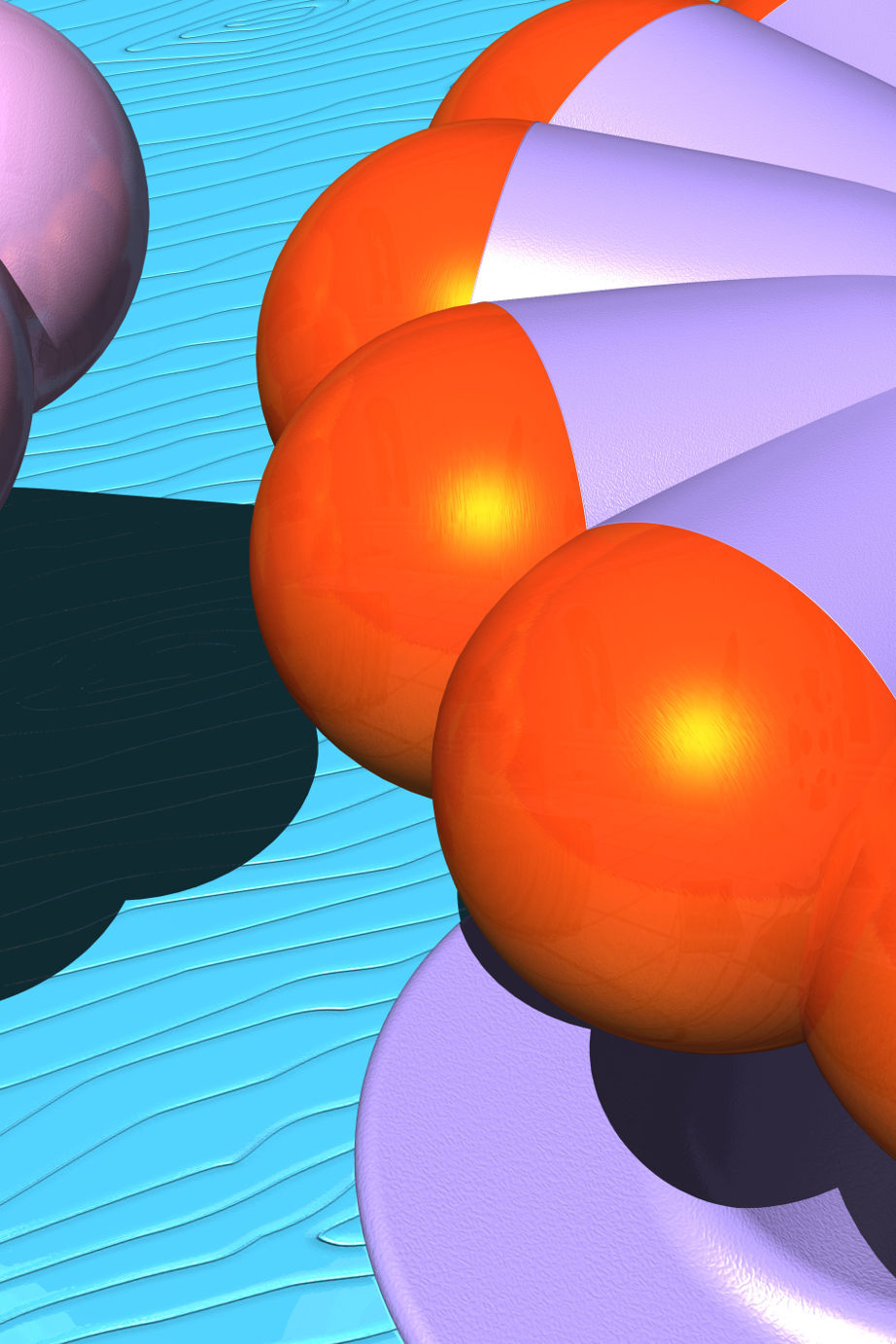
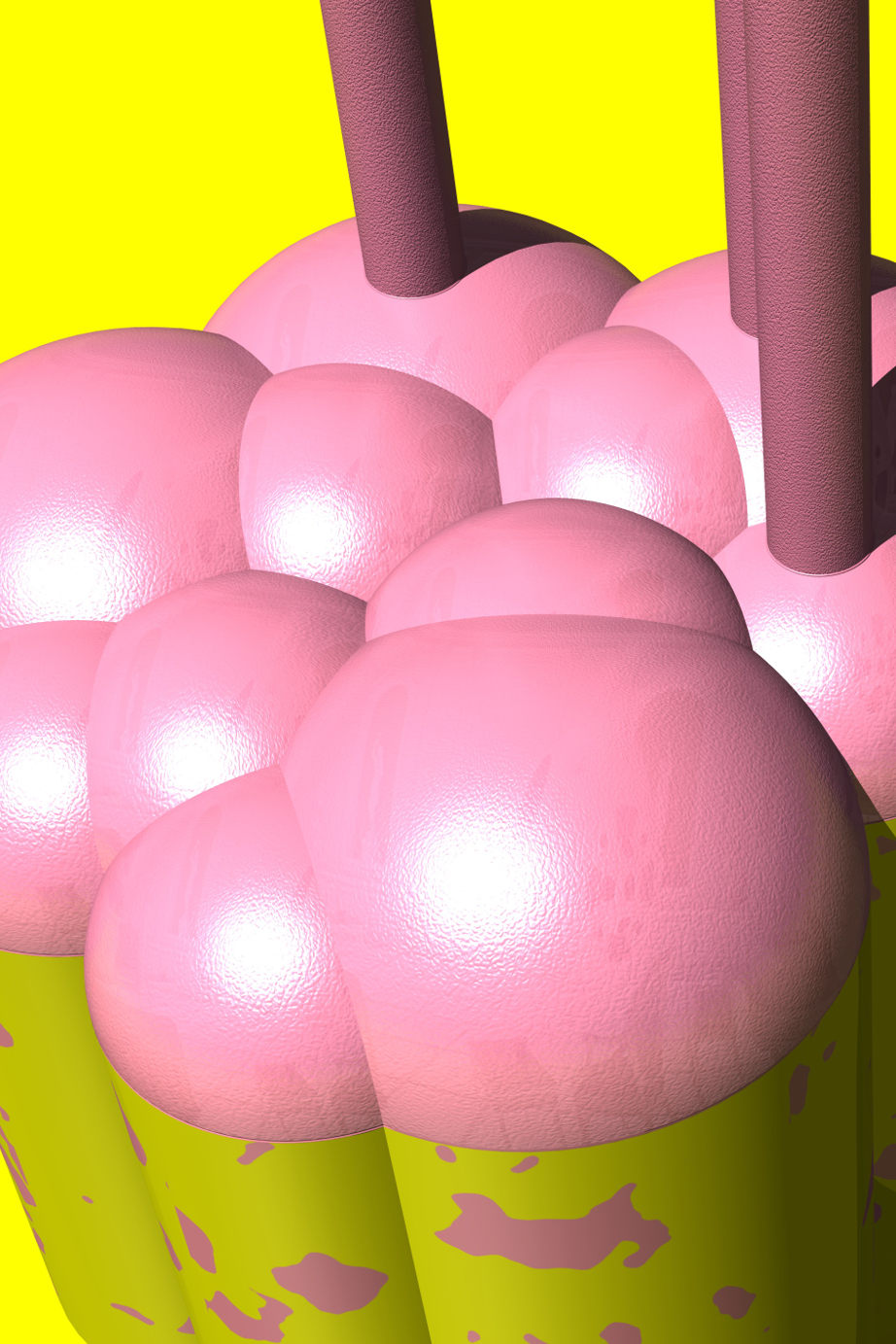 34
34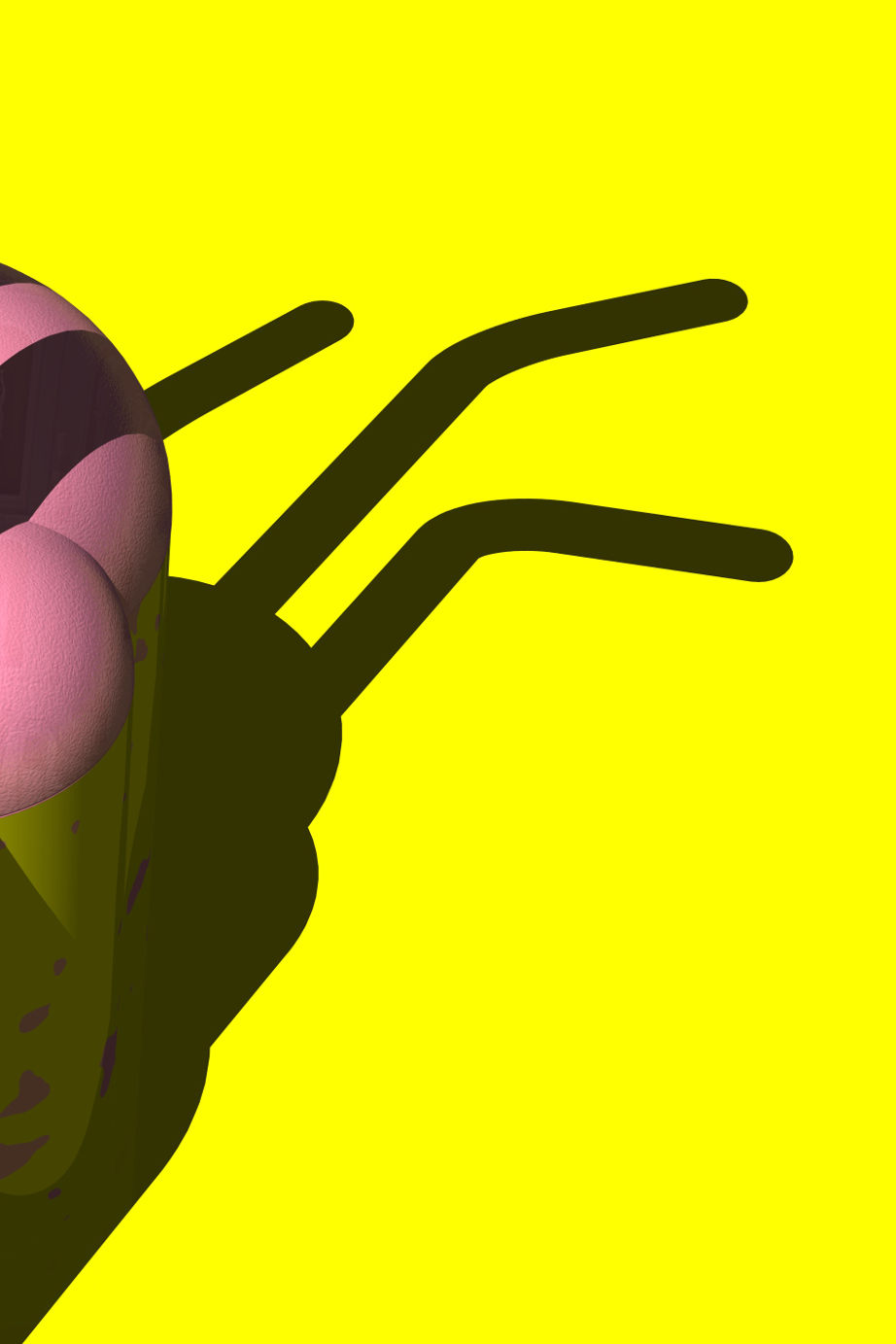
Hybrid Publishing
This publication was developed by Hybrid Publishing, founded by the Willem de Kooning Academy as a means of profiling and disseminating outstanding research conducted by its students and teaching staff, whether independently or in collaboration with external partners. Researching and experimenting across a broad range of processes native to digital and analog media, WdKA Hybrid Publishing fosters novel approaches to design, authoring, reading and dissemination made possible through ongoing developments from the legacies of Gutenberg's press to present-day technologies.
HP Research Awards
The HP Research Awards series showcases the work of recipients of the Willem de Kooning Research Award. Established by the Willem de Kooning Foundation, the awards are granted to outstanding students whose graduation projects and research have helped provide new insights to broader audiences.
For a digital version of this and other publications, go to at.wdka.nl/hpresearchawards
Colophon
Supertoys Supertoys: Objects of the Imaginary © 2018 at.wdka.nl/hpresearchawards
Developed by Hybrid Publishing,
Willem de Kooning Academy
Text © Merle Flügge (supertoyssupertoys.com)
Illustrations/Designs © Merle Flügge
All rights reserved
ISBN 978-94-92479-07-5
Author: Merle Flügge (supertoyssupertoys.com)
Editor: Max Bruinsma (maxbruinsma.nl)
Proofreading and corrections: Johanna Monk
Coordinators: Loes Sikkes and Kimmy Spreeuwenberg
Illustrations: Merle Flügge
Graphic Designer: Arthur Boer (arthurboer.net)
Developer: Lucia Dossin (luciadossin.net)
Thanks to:
Jeroen Chabot
Willem de Kooning Academy
Alex Suárez
Piet Zwart Institute
My graduation supervisors:
Max Bruinsma
Füsun Türetken
Marta M Roy Torrecilla
With special thanks to:
Job Mouwen

